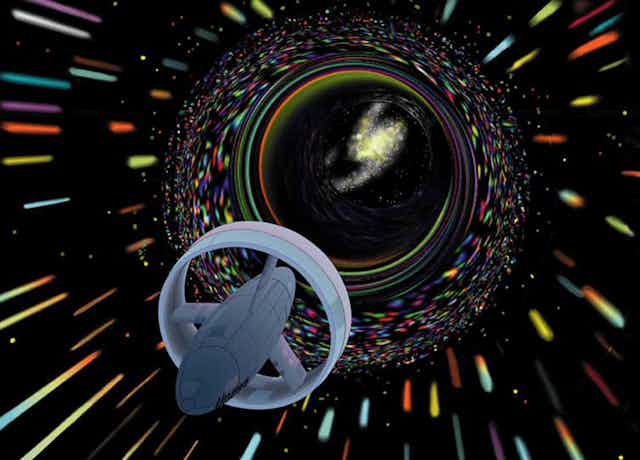

Warp drives: Physicists give chances of faster-than -light space travel a boost
Associate Professor of Physics, Oklahoma State University
Disclosure statement
Mario Borunda does not work for, consult, own shares in or receive funding from any company or organisation that would benefit from this article, and has disclosed no relevant affiliations beyond their academic appointment.
Oklahoma State University provides funding as a member of The Conversation US.
View all partners
The closest star to Earth is Proxima Centauri. It is about 4.25 light-years away, or about 25 trillion miles (40 trillion km). The fastest ever spacecraft, the now- in-space Parker Solar Probe will reach a top speed of 450,000 mph. It would take just 20 seconds to go from Los Angeles to New York City at that speed, but it would take the solar probe about 6,633 years to reach Earth’s nearest neighboring solar system.
If humanity ever wants to travel easily between stars, people will need to go faster than light. But so far, faster-than-light travel is possible only in science fiction.
In Issac Asimov’s Foundation series , humanity can travel from planet to planet, star to star or across the universe using jump drives. As a kid, I read as many of those stories as I could get my hands on. I am now a theoretical physicist and study nanotechnology, but I am still fascinated by the ways humanity could one day travel in space.
Some characters – like the astronauts in the movies “Interstellar” and “Thor” – use wormholes to travel between solar systems in seconds. Another approach – familiar to “Star Trek” fans – is warp drive technology. Warp drives are theoretically possible if still far-fetched technology. Two recent papers made headlines in March when researchers claimed to have overcome one of the many challenges that stand between the theory of warp drives and reality.
But how do these theoretical warp drives really work? And will humans be making the jump to warp speed anytime soon?
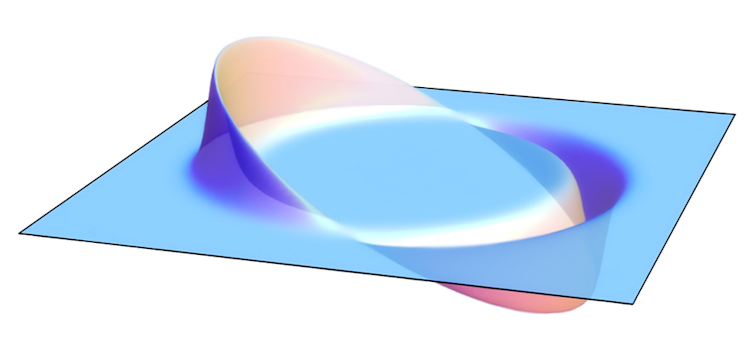
Compression and expansion
Physicists’ current understanding of spacetime comes from Albert Einstein’s theory of General Relativity . General Relativity states that space and time are fused and that nothing can travel faster than the speed of light. General relativity also describes how mass and energy warp spacetime – hefty objects like stars and black holes curve spacetime around them. This curvature is what you feel as gravity and why many spacefaring heroes worry about “getting stuck in” or “falling into” a gravity well. Early science fiction writers John Campbell and Asimov saw this warping as a way to skirt the speed limit.
What if a starship could compress space in front of it while expanding spacetime behind it? “Star Trek” took this idea and named it the warp drive.
In 1994, Miguel Alcubierre, a Mexican theoretical physicist, showed that compressing spacetime in front of the spaceship while expanding it behind was mathematically possible within the laws of General Relativity . So, what does that mean? Imagine the distance between two points is 10 meters (33 feet). If you are standing at point A and can travel one meter per second, it would take 10 seconds to get to point B. However, let’s say you could somehow compress the space between you and point B so that the interval is now just one meter. Then, moving through spacetime at your maximum speed of one meter per second, you would be able to reach point B in about one second. In theory, this approach does not contradict the laws of relativity since you are not moving faster than light in the space around you. Alcubierre showed that the warp drive from “Star Trek” was in fact theoretically possible.
Proxima Centauri here we come, right? Unfortunately, Alcubierre’s method of compressing spacetime had one problem: it requires negative energy or negative mass.
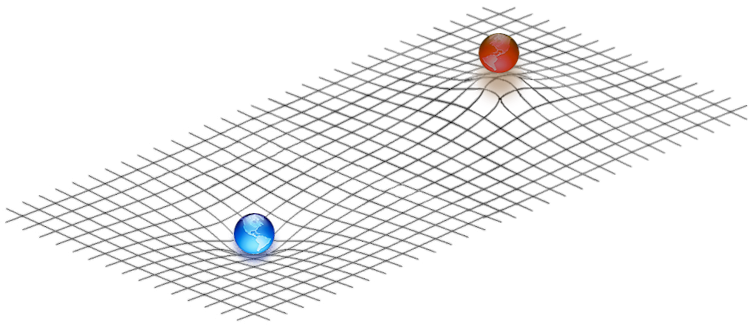
A negative energy problem
Alcubierre’s warp drive would work by creating a bubble of flat spacetime around the spaceship and curving spacetime around that bubble to reduce distances. The warp drive would require either negative mass – a theorized type of matter – or a ring of negative energy density to work. Physicists have never observed negative mass, so that leaves negative energy as the only option.
To create negative energy, a warp drive would use a huge amount of mass to create an imbalance between particles and antiparticles. For example, if an electron and an antielectron appear near the warp drive, one of the particles would get trapped by the mass and this results in an imbalance. This imbalance results in negative energy density. Alcubierre’s warp drive would use this negative energy to create the spacetime bubble.
But for a warp drive to generate enough negative energy, you would need a lot of matter. Alcubierre estimated that a warp drive with a 100-meter bubble would require the mass of the entire visible universe .
In 1999, physicist Chris Van Den Broeck showed that expanding the volume inside the bubble but keeping the surface area constant would reduce the energy requirements significantly , to just about the mass of the sun. A significant improvement, but still far beyond all practical possibilities.
A sci-fi future?
Two recent papers – one by Alexey Bobrick and Gianni Martire and another by Erik Lentz – provide solutions that seem to bring warp drives closer to reality.
Bobrick and Martire realized that by modifying spacetime within the bubble in a certain way, they could remove the need to use negative energy. This solution, though, does not produce a warp drive that can go faster than light.
[ Over 100,000 readers rely on The Conversation’s newsletter to understand the world. Sign up today .]
Independently, Lentz also proposed a solution that does not require negative energy. He used a different geometric approach to solve the equations of General Relativity, and by doing so, he found that a warp drive wouldn’t need to use negative energy. Lentz’s solution would allow the bubble to travel faster than the speed of light.
It is essential to point out that these exciting developments are mathematical models. As a physicist, I won’t fully trust models until we have experimental proof. Yet, the science of warp drives is coming into view. As a science fiction fan, I welcome all this innovative thinking. In the words of Captain Picard , things are only impossible until they are not.
- General Relativity
- Theoretical physics
- Interstellar
- Speed of light
- Albert Einstein

Head of School, School of Arts & Social Sciences, Monash University Malaysia

Chief Operating Officer (COO)

Clinical Teaching Fellow

Data Manager

Director, Social Policy
We have completed maintenance on Astronomy.com and action may be required on your account. Learn More

- Login/Register
- Solar System
- Exotic Objects
- Upcoming Events
- Deep-Sky Objects
- Observing Basics
- Telescopes and Equipment
- Astrophotography
- Space Exploration
- Human Spaceflight
- Robotic Spaceflight
- The Magazine
Warp drives: Physicists investigate faster-than-light space travel
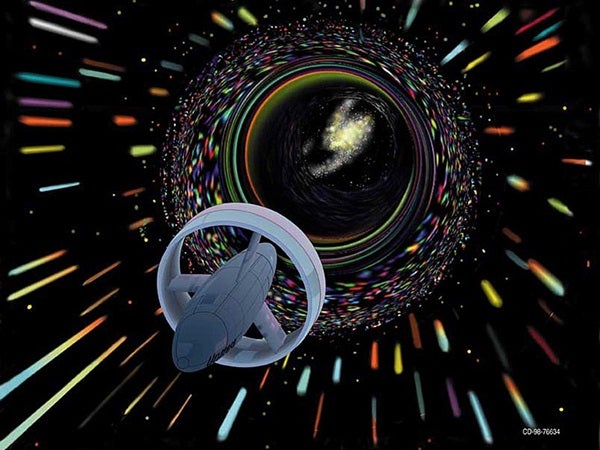
The closest star to Earth is Proxima Centauri. It is about 4.25 light-years away, or about 25 trillion miles (40 trillion kilometers). The fastest ever spacecraft, the now- in-space Parker Solar Probe will reach a top speed of 450,000 mph. It would take just 20 seconds to go from Los Angeles to New York City at that speed, but it would take the solar probe about 6,633 years to reach Earth’s nearest neighboring solar system.
If humanity ever wants to travel easily between stars, people will need to go faster than light. But so far, faster-than-light travel is possible only in science fiction.
In Issac Asimov’s Foundation series , humanity can travel from planet to planet, star to star or across the universe using jump drives. As a kid, I read as many of those stories as I could get my hands on. I am now a theoretical physicist and study nanotechnology, but I am still fascinated by the ways humanity could one day travel in space.
Some characters – like the astronauts in the movies “Interstellar” and “Thor” – use wormholes to travel between solar systems in seconds. Another approach – familiar to “Star Trek” fans – is warp drive technology. Warp drives are theoretically possible if still far-fetched technology. Two recent papers made headlines in March when researchers claimed to have overcome one of the many challenges that stand between the theory of warp drives and reality.
But how do these theoretical warp drives really work? And will humans be making the jump to warp speed anytime soon?
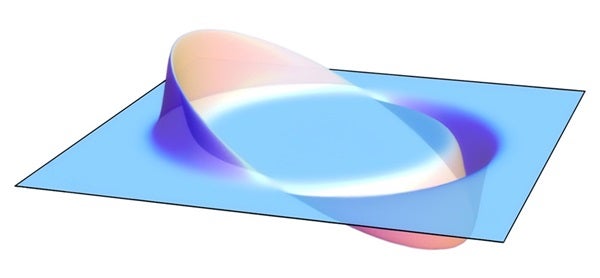
Compression and expansion
Physicists’ current understanding of spacetime comes from Albert Einstein’s theory of general relativity . General relativity states that space and time are fused and that nothing can travel faster than the speed of light. General relativity also describes how mass and energy warp spacetime – hefty objects like stars and black holes curve spacetime around them. This curvature is what you feel as gravity and why many spacefaring heroes worry about “getting stuck in” or “falling into” a gravity well. Early science fiction writers John Campbell and Asimov saw this warping as a way to skirt the speed limit.
What if a starship could compress space in front of it while expanding spacetime behind it? “Star Trek” took this idea and named it the warp drive.
In 1994, Miguel Alcubierre, a Mexican theoretical physicist, showed that compressing spacetime in front of the spaceship while expanding it behind was mathematically possible within the laws of General Relativity . So, what does that mean? Imagine the distance between two points is 33 feet (10 meters). If you are standing at point A and can travel one meter per second, it would take 10 seconds to get to point B. However, let’s say you could somehow compress the space between you and point B so that the interval is now just one meter. Then, moving through spacetime at your maximum speed of one meter per second, you would be able to reach point B in about one second. In theory, this approach does not contradict the laws of relativity since you are not moving faster than light in the space around you. Alcubierre showed that the warp drive from “Star Trek” was in fact theoretically possible.
Proxima Centauri here we come, right? Unfortunately, Alcubierre’s method of compressing spacetime had one problem: it requires negative energy or negative mass.
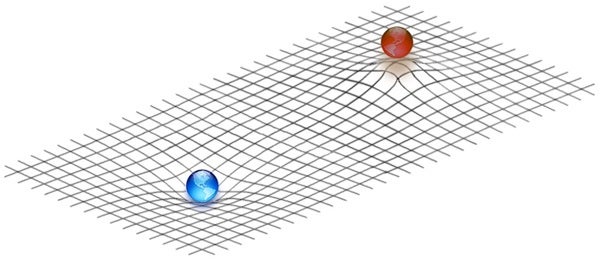
A negative energy problem
Alcubierre’s warp drive would work by creating a bubble of flat spacetime around the spaceship and curving spacetime around that bubble to reduce distances. The warp drive would require either negative mass – a theorized type of matter – or a ring of negative energy density to work. Physicists have never observed negative mass, so that leaves negative energy as the only option.
To create negative energy, a warp drive would use a huge amount of mass to create an imbalance between particles and antiparticles. For example, if an electron and an antielectron appear near the warp drive, one of the particles would get trapped by the mass and this results in an imbalance. This imbalance results in negative energy density. Alcubierre’s warp drive would use this negative energy to create the spacetime bubble.
But for a warp drive to generate enough negative energy, you would need a lot of matter. Alcubierre estimated that a warp drive with a 100-meter bubble would require the mass of the entire visible universe .
In 1999, physicist Chris Van Den Broeck showed that expanding the volume inside the bubble but keeping the surface area constant would reduce the energy requirements significantly , to just about the mass of the Sun. A significant improvement, but still far beyond all practical possibilities.
A sci-fi future?
Two recent papers – one by Alexey Bobrick and Gianni Martire and another by Erik Lentz – provide solutions that seem to bring warp drives closer to reality.
Bobrick and Martire realized that by modifying spacetime within the bubble in a certain way, they could remove the need to use negative energy. This solution, though, does not produce a warp drive that can go faster than light.
Independently, Lentz also proposed a solution that does not require negative energy. He used a different geometric approach to solve the equations of general relativity, and by doing so, he found that a warp drive wouldn’t need to use negative energy. Lentz’s solution would allow the bubble to travel faster than the speed of light.
It is essential to point out that these exciting developments are mathematical models. As a physicist, I won’t fully trust models until we have experimental proof. Yet, the science of warp drives is coming into view. As a science fiction fan, I welcome all this innovative thinking. In the words of Captain Picard , things are only impossible until they are not.

Why do pictures of Earth taken from the Moon show a black sky with no stars?
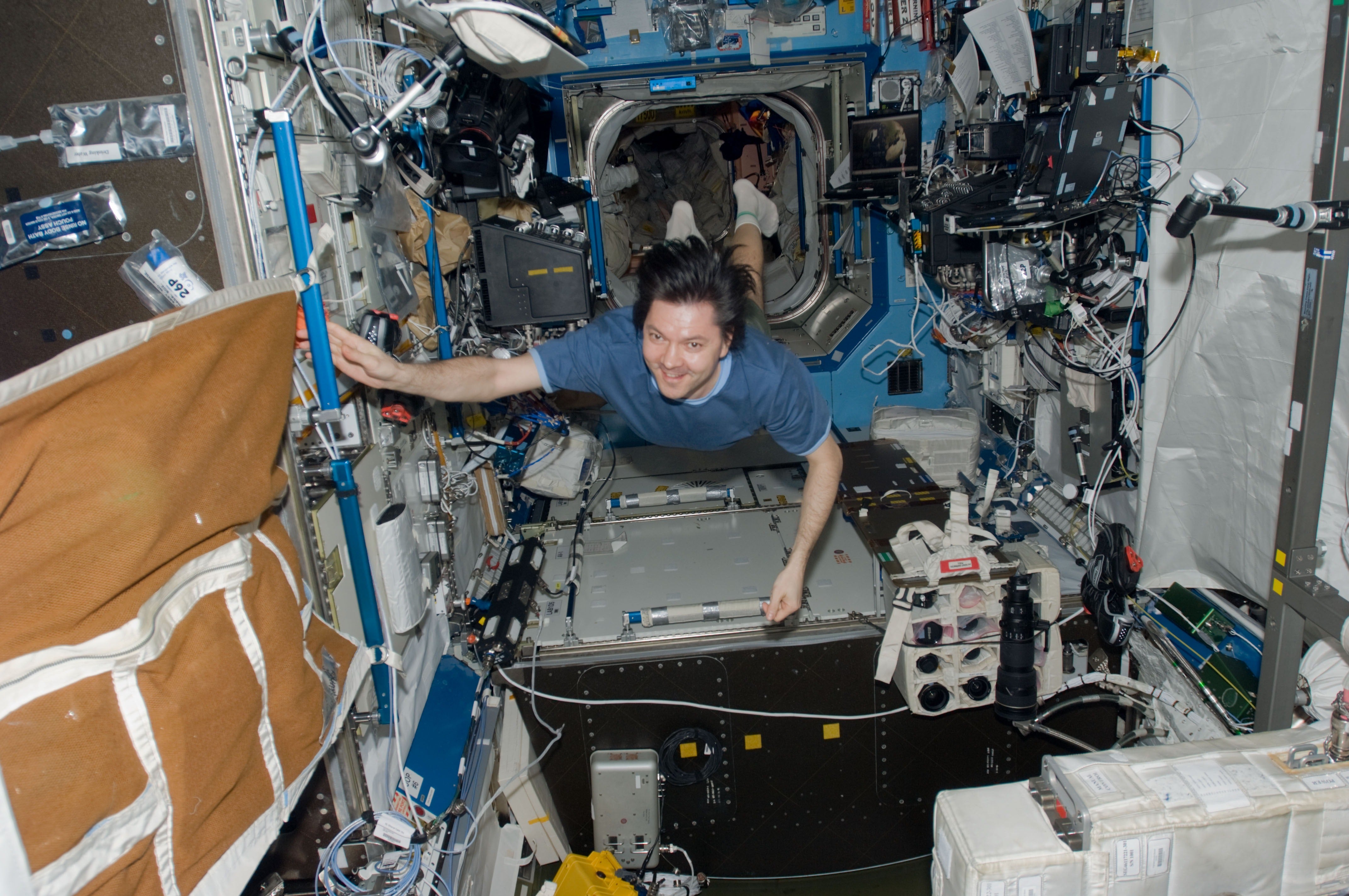
Oleg Kononenko reaches a record-setting 1,000 days in space
Boeing starliner launches nasa astronauts on mission to the iss.
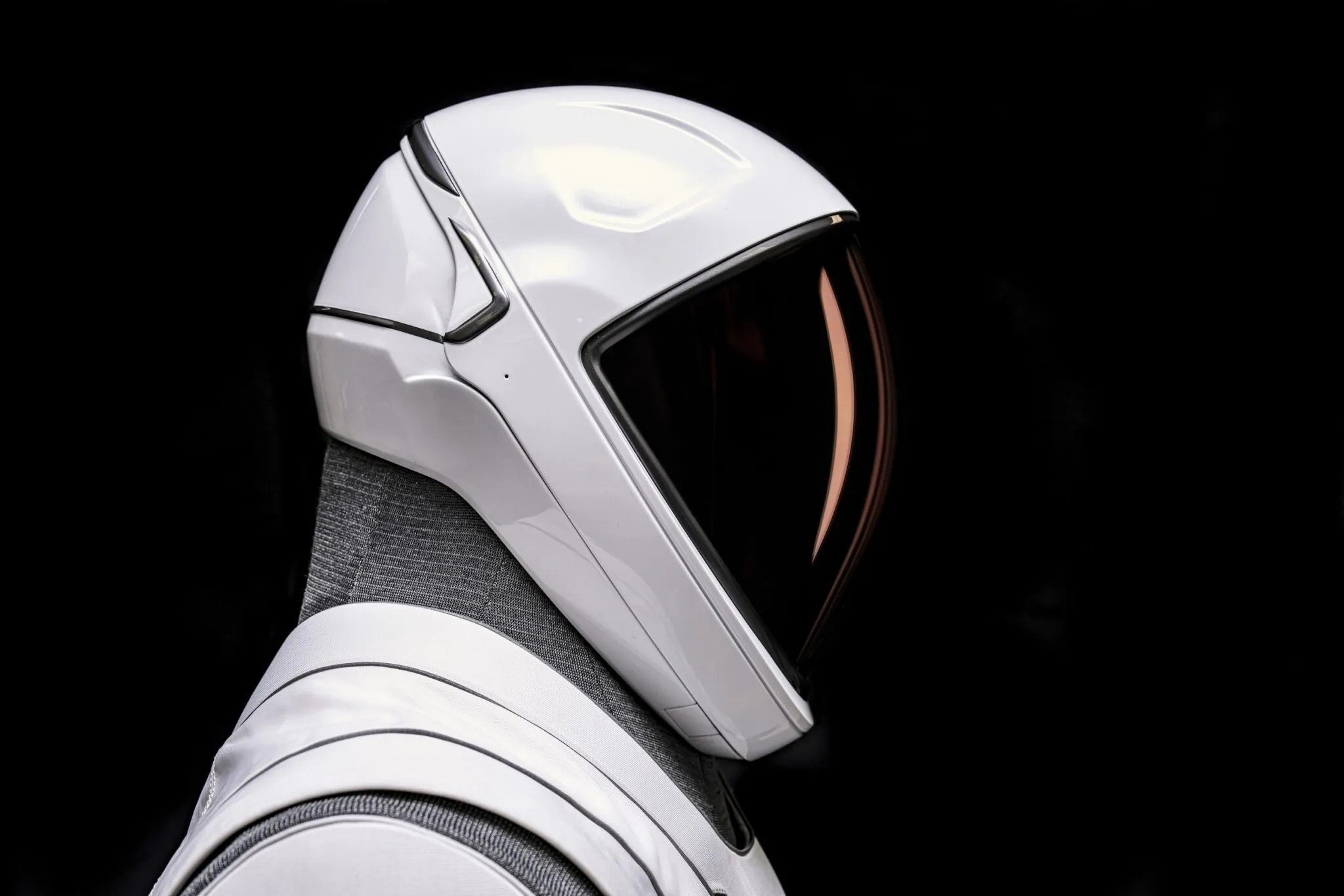
What Is Polaris Dawn? The upcoming SpaceX mission, explained
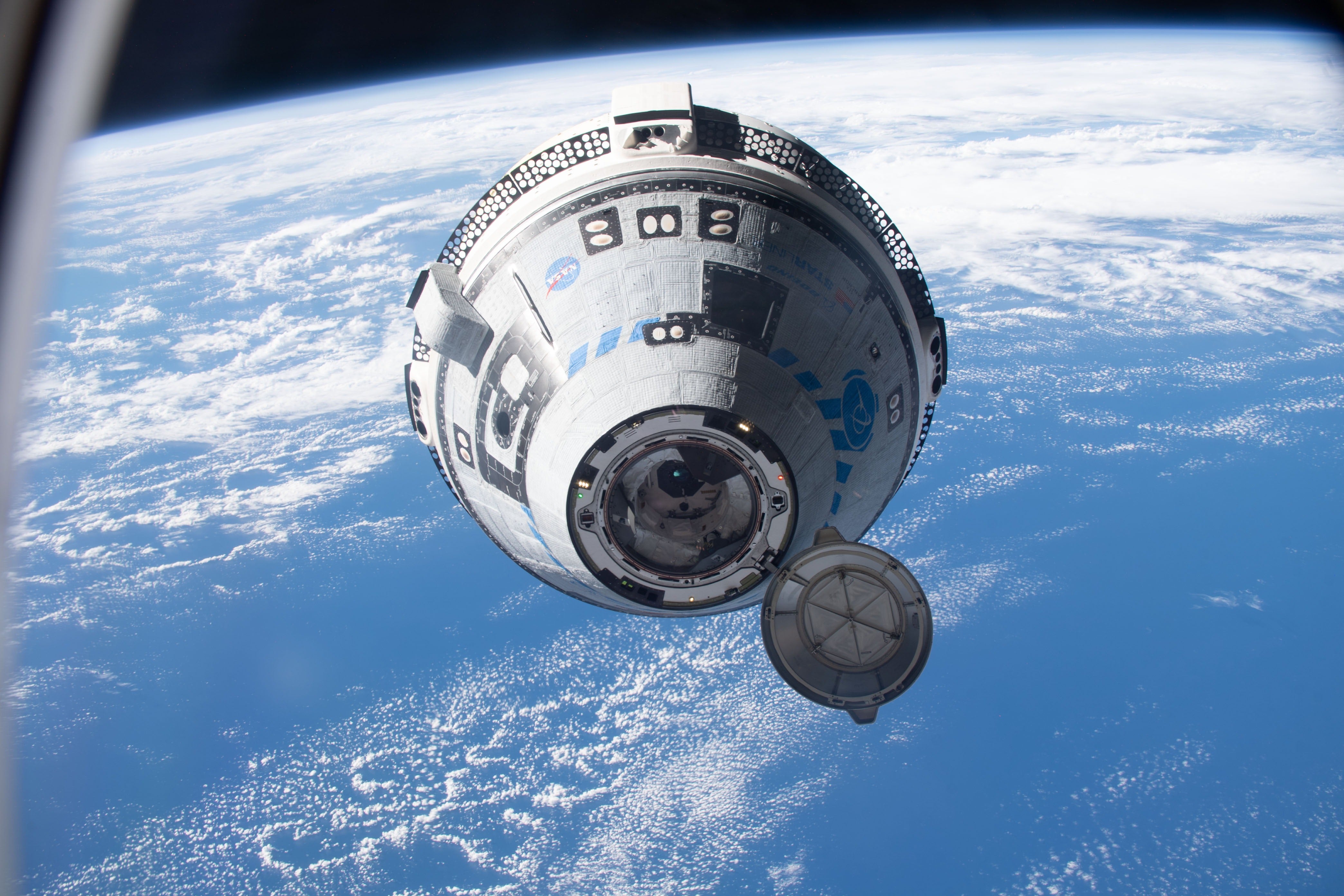
Why Boeing’s Starliner launch is an important milestone for commercial spaceflight
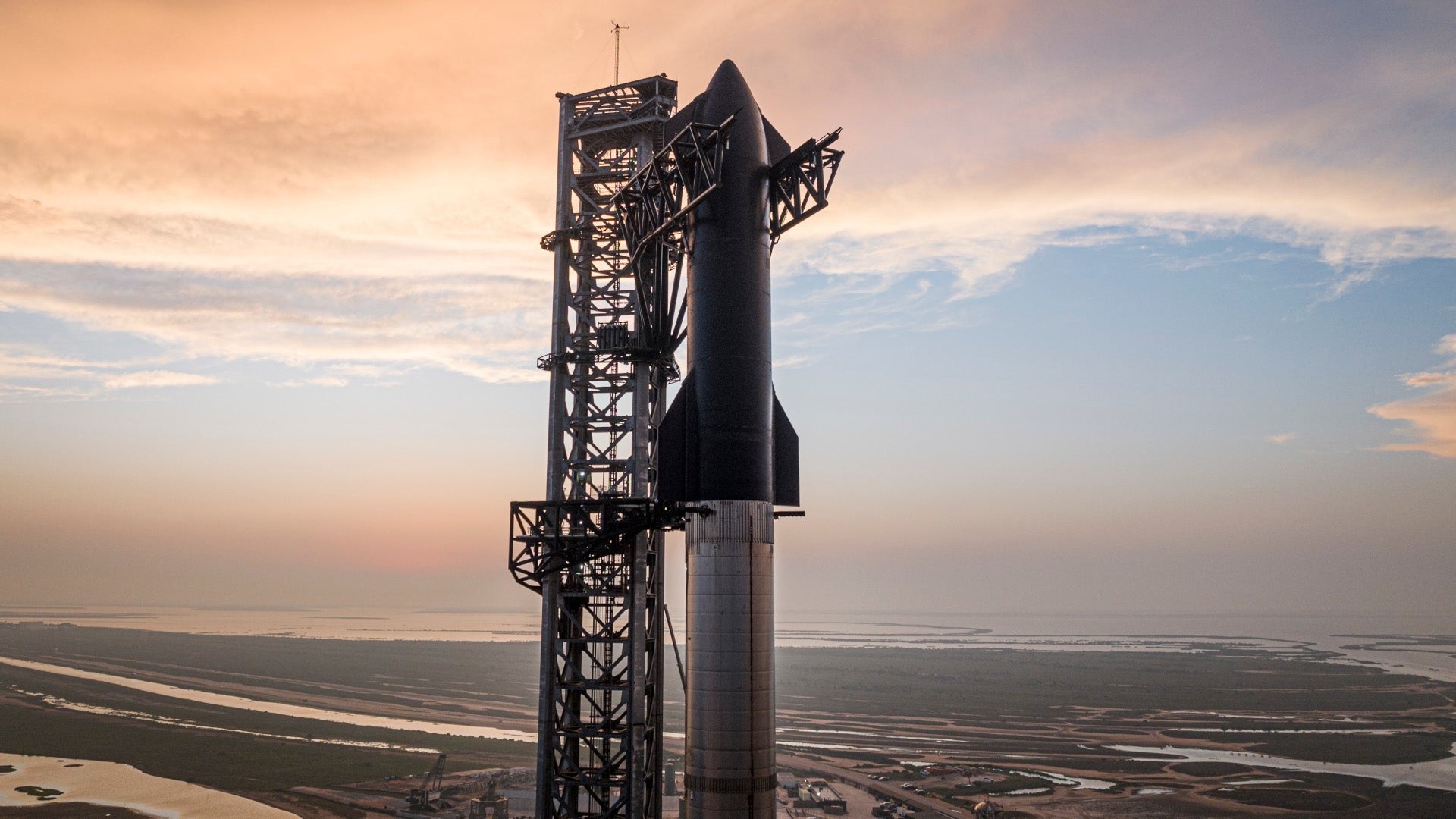
SpaceX adds tourism offering to website
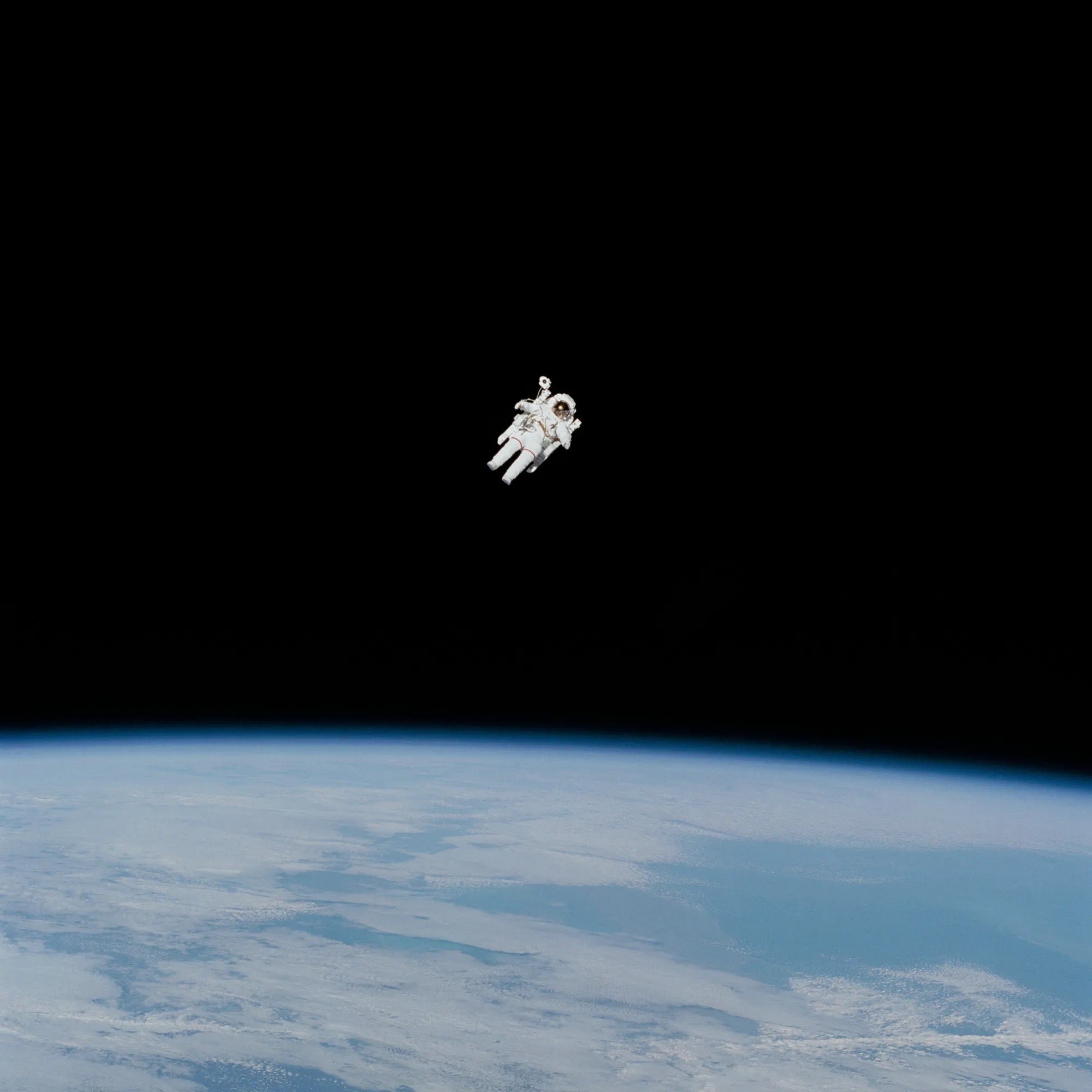
Astronauts have a surprising ability to gauge distances in space
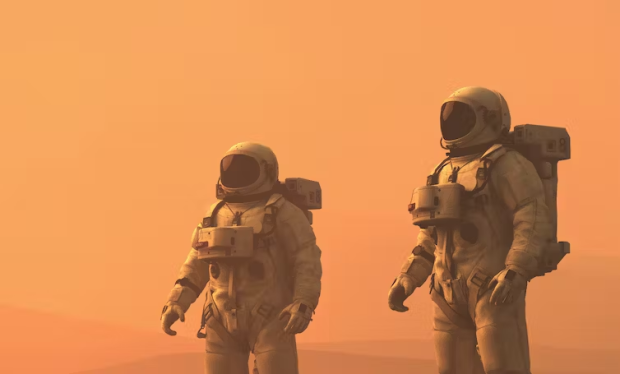
What happens if someone dies in space?

Meet Katya Echazarreta, the first Mexican-born woman to travel to space
To revisit this article, visit My Profile, then View saved stories .
- Backchannel
- Newsletters
- WIRED Insider
- WIRED Consulting
Paul Sutter, Ars Technica
A Warp Drive Breakthrough Inches a Tiny Bit Closer to Star Trek

A team of physicists has discovered that it’s possible to build a real, actual, physical warp drive and not break any known rules of physics . One caveat: The vessel doing the warping can’t exceed the speed of light, so you’re not going to get anywhere interesting anytime soon. But this research still represents an important advance in our understanding of gravity .
Moving Without Motion
Einstein’s general theory of relativity is a tool kit for solving problems involving gravity that connects mass and energy with deformations in spacetime. In turn, those spacetime deformations instruct the mass and energy how to move. In almost all cases, physicists use the equations of relativity to figure out how a particular combination of objects will move. They have some physical scenario, like a planet orbiting a star or two black holes colliding, and they ask how those objects deform spacetime and what the subsequent evolution of the system should be.
But it’s also possible to run Einstein’s math in reverse by imagining some desired motion and asking what kind of spacetime deformation can make it possible. This is how the Mexican physicist Miguel Alcubierre discovered the physical basis for a warp drive—long a staple of the Star Trek franchise.
The goal of a warp drive is to get from A to B in the time between commercial breaks, which typically involves faster-than-light motion. But special relativity expressly forbids speeds faster than light. While this never bothered the writers of Star Trek , it did irritate Alcubierre. He discovered that it was possible to build a warp drive through a clever manipulation of spacetime, arranging it so that space in front of a vessel gets scrunched up and the space behind the vessel stretched out. This generates motion without, strictly speaking, movement.
It sounds like a contradiction, but that’s just one of the many wonderful aspects of general relativity. Alcubierre’s warp drive avoids violations of the speed-of-light limit because it never moves through space; instead space itself is manipulated to, in essence, bring the spacecraft’s destination closer to it.
While tantalizing, Alcubierre’s design has a fatal flaw. To provide the necessary distortions of spacetime, the spacecraft must contain some form of exotic matter, typically regarded as matter with negative mass. Negative mass has some conceptual problems that seem to defy our understanding of physics, like the possibility that if you kick a ball that weighs negative 5 kilograms, it will go flying backwards, violating conservation of momentum. Plus, nobody has ever seen any object with negative mass existing in the real universe, ever.
These problems with negative mass have led physicists to propose various versions of “energy conditions” as supplements to general relativity. These aren’t baked into relativity itself, but add-ons needed because general relativity allows things like negative mass that don’t appear to exist in our universe—these energy conditions keep them out of relativity’s equations. They’re scientists’ response to the unsettling fact that vanilla GR allows for things like superluminal motion, but the rest of the universe doesn’t seem to agree.
Warp Factor Zero
The energy conditions aren’t experimentally or observationally proven, but they are statements that concord with all observations of the universe, so most physicists take them rather seriously. And until recently, physicists have viewed those energy conditions as making it absolutely 100 percent clear that you can’t build a warp drive, even if you really wanted to.
But there is a way around it, discovered by an international team of physicists led by Jared Fuchs at the University of Alabama in Huntsville. (The team is also affiliated with the Applied Propulsion Laboratory of Applied Physics, a virtual think tank dedicated to the research of, among many other things, warp drives.) In a paper accepted for publication in the journal Classical and Quantum Gravity , the researchers dug deep into relativity to explore if any version of a warp drive could work.

By Joseph Cox

By Matt Burgess

By Dhruv Mehrotra

By Hannah Zeavin
The equations of general relativity are notoriously difficult to solve, especially in complex cases such as a warp drive. So the team turned to software algorithms; instead of trying to solve the equations by hand, they explored their solutions numerically and verified that they conformed to the energy conditions.
The team did not actually attempt to construct a propulsion device. Instead, they explored various solutions to general relativity that would allow travel from point to point without a vessel undergoing any acceleration or experiencing any overwhelming gravitational tidal forces within the vessel, much to the comfort of any imagined passengers. They then checked whether these solutions adhered to the energy conditions that prevent the use of exotic matter.
The researchers did indeed discover a warp drive solution: a method of manipulating space so that travelers can move without accelerating. There is no such thing as a free lunch, however, and the physicality of this warp drive does come with a major caveat: The vessel and passengers can never travel faster than light. Also disappointing: the fact that the researchers behind the new work don’t seem to bother with figuring out what configurations of matter would allow the warping to happen.
The Future of Gravity
On one hand, that’s a gigantic letdown. We already have plenty of methods for traveling slower than light (rockets, walking, etc.), so adding one more to the list isn’t all that exciting. Plus, even if we wanted to build this warp drive, the gulf between this hyper-theoretical work and an actual, physical propulsion mechanism is the same as the difference between writing down Newton’s laws and building a Falcon 9.
But that doesn’t mean this new development isn’t interesting. We don’t fully understand gravity, and we know that Einstein’s theory is incomplete. One of the signposts that we have to a future understanding of gravity is the fact that general relativity allows for interesting, exotic solutions—like warp drives—that appear to violate other domains of physical understanding.
Us physicists like it when all of our theories line up and agree on the nature of the Universe. So if the energy conditions set real limits on physics—limits where things like negative mass don’t just not exist , but can’t exist —then we’d like a physical theory that says that from the beginning, instead of relying on add-ons like the energy conditions.
Exploring how a warp drive might (not) work, and under what conditions and restrictions, is a step in that direction. For years physicists thought that the energy conditions outlawed all kinds of warp drives, yet the new research shows a possible way around that. What comes next will be a win no matter what; whether we get a fancy superluminal warp drive or not. That’s because whatever comes out of future lines of inquiry along these directions, we’re going to learn more about the force of gravity, and just possibly revolutionize our understanding of it.
And who knows what we’ll get once we understand gravity better.
This story originally appeared on Ars Technica .
You Might Also Like …
In your inbox: Get Plaintext —Steven Levy's long view on tech
Inside the biggest FBI sting operation in history
The WIRED AI Elections Project : Tracking more than 60 global elections
Ecuador is literally powerless in the face of drought
Rest assured: Here are the best mattresses you can buy online

Lyndie Chiou

Sebastian Wieczorek

Emily Mullin

Jonathan O'Callaghan

Hannah Singleton
Warp Drive May Be More Feasible Than Thought, Scientists Say
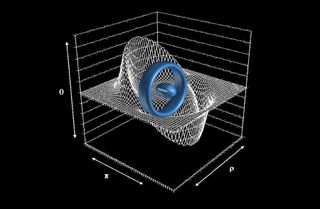
HOUSTON — A warp drive to achieve faster-than-light travel — a concept popularized in television's Star Trek — may not be as unrealistic as once thought, scientists say.
A warp drive would manipulate space-time itself to move a starship, taking advantage of a loophole in the laws of physics that prevent anything from moving faster than light . A concept for a real-life warp drive was suggested in 1994 by Mexican physicist Miguel Alcubierre; however, subsequent calculations found that such a device would require prohibitive amounts of energy.
Now physicists say that adjustments can be made to the proposed warp drive that would enable it to run on significantly less energy, potentially bringing the idea back from the realm of science fiction into science.
"There is hope," Harold "Sonny" White of NASA's Johnson Space Center said here Friday (Sept. 14) at the 100 Year Starship Symposium , a meeting to discuss the challenges of interstellar spaceflight.
Warping space-time
An Alcubierre warp drive would involve a football-shape spacecraft attached to a large ring encircling it. This ring, potentially made of exotic matter, would cause space-time to warp around the starship, creating a region of contracted space in front of it and expanded space behind. [ Star Trek's Warp Drive: Are We There Yet? | Video ]
Meanwhile, the starship itself would stay inside a bubble of flat space-time that wasn't being warped at all.
Get the Space.com Newsletter
Breaking space news, the latest updates on rocket launches, skywatching events and more!
"Everything within space is restricted by the speed of light," explained Richard Obousy, president of Icarus Interstellar, a non-profit group of scientists and engineers devoted to pursuing interstellar spaceflight. "But the really cool thing is space-time, the fabric of space, is not limited by the speed of light."
With this concept, the spacecraft would be able to achieve an effective speed of about 10 times the speed of light, all without breaking the cosmic speed limit.
The only problem is, previous studies estimated the warp drive would require a minimum amount of energy about equal to the mass-energy of the planet Jupiter.
But recently White calculated what would happen if the shape of the ring encircling the spacecraft was adjusted into more of a rounded donut, as opposed to a flat ring. He found in that case, the warp drive could be powered by a mass about the size of a spacecraft like the Voyager 1 probe NASA launched in 1977.
Furthermore, if the intensity of the space warps can be oscillated over time, the energy required is reduced even more, White found.
"The findings I presented today change it from impractical to plausible and worth further investigation," White told SPACE.com. "The additional energy reduction realized by oscillating the bubble intensity is an interesting conjecture that we will enjoy looking at in the lab."
Laboratory tests
White and his colleagues have begun experimenting with a mini version of the warp drive in their laboratory.
They set up what they call the White-Juday Warp Field Interferometer at the Johnson Space Center, essentially creating a laser interferometer that instigates micro versions of space-time warps.
"We're trying to see if we can generate a very tiny instance of this in a tabletop experiment, to try to perturb space-time by one part in 10 million," White said.
He called the project a "humble experiment" compared to what would be needed for a real warp drive, but said it represents a promising first step.
And other scientists stressed that even outlandish-sounding ideas, such as the warp drive, need to be considered if humanity is serious about traveling to other stars.
"If we're ever going to become a true spacefaring civilization, we're going to have to think outside the box a little bit, we're going to have to be a little bit audacious," Obousy said.
You can follow SPACE.com assistant managing editor Clara Moskowitz on Twitter @ClaraMoskowitz . Follow SPACE.com on Twitter @Spacedotcom . We're also on Facebook & Google+ .
Join our Space Forums to keep talking space on the latest missions, night sky and more! And if you have a news tip, correction or comment, let us know at: [email protected].
Clara Moskowitz is a science and space writer who joined the Space.com team in 2008 and served as Assistant Managing Editor from 2011 to 2013. Clara has a bachelor's degree in astronomy and physics from Wesleyan University, and a graduate certificate in science writing from the University of California, Santa Cruz. She covers everything from astronomy to human spaceflight and once aced a NASTAR suborbital spaceflight training program for space missions. Clara is currently Associate Editor of Scientific American. To see her latest project is, follow Clara on Twitter.
Holy Stone HS900 Sirius drone review
Autel EVO Max 4T drone review
New moon of June 2024 tonight lets Saturn, Mars and Jupiter shine
Most Popular
- 2 SpaceX Starship launches nail-biting Flight 4 test of the world's most powerful rocket (video, photos)
- 3 More people Googled 'northern lights' in May 2024 than in any other month in history
- 4 Chang’e 6 mission’s far-side moon samples enter return-to-Earth module in lunar orbit
- 5 Fly over the scarred canyons of Mars in this breathtaking video from European spacecraft
July 13, 2021
11 min read
Star Trek ’s Warp Drive Leads to New Physics
Researchers are taking a closer look at this science-fiction staple—and bringing the idea a little closer to reality
By Robert Gast & Spektrum

Warp one, engage!
Getty Images
For Erik Lentz, it all started with Star Trek . Every few episodes of Star Trek: The Next Generation, Captain Jean-Luc Picard would raise his hand and order, “Warp one, engage!” Then stars became dashes, and light-years flashed by at impossible speed. And Lentz, still in elementary school, wondered whether warp drive might also work in real life.
“At some point, I realized that the technology didn’t exist,” Lentz says. He studied physics at the University of Washington, wrote his Ph.D. dissertation on dark matter and generally became far too busy to be concerned with science fiction. But then, at the start of the coronavirus pandemic, Lentz found himself alone in Göttingen, Germany, where he was doing postdoctoral work. He suddenly had plenty of free time on his hands—and childhood fancies in his head.
Lentz read everything he could find on warp drives in the scientific literature, which was not very much. Then he began to think about it for himself. After a few weeks, something occurred to him that everyone else seemed to have overlooked. Lentz put his idea on paper and discussed it with more experienced colleagues. A year later it was published in a physics journal .
On supporting science journalism
If you're enjoying this article, consider supporting our award-winning journalism by subscribing . By purchasing a subscription you are helping to ensure the future of impactful stories about the discoveries and ideas shaping our world today.
It quickly became clear that Lentz was not the only person dreaming about warp drives. Media outlets all over the world picked up the story , and a dozen journalists asked for interviews. A discussion on the online forum Reddit attracted 2,700 comments and 33,000 likes. One Internet user wrote, “Anyone else feel like they were born 300 years too soon?”
A Bubble in Space and Time
There is no doubt that the universe is still far too vast for humans to traverse. It takes more than four years for a beam of light to reach Earth’s nearest star Proxima Centauri. Even with the best available propulsion systems, it would take tens of thousands of years for a human to get there. One can always dream about establishing colonies in other star systems, but it is not a journey anyone is likely to undertake.
But perhaps one day it might be possible to reduce the travel time. There are many ideas about how to do that, from laser-accelerated solar sails to nuclear propulsion. But even with the aid of these technologies, you would not get too far in a human lifetime. The galaxy really is open only to those who travel as fast as light—or faster.
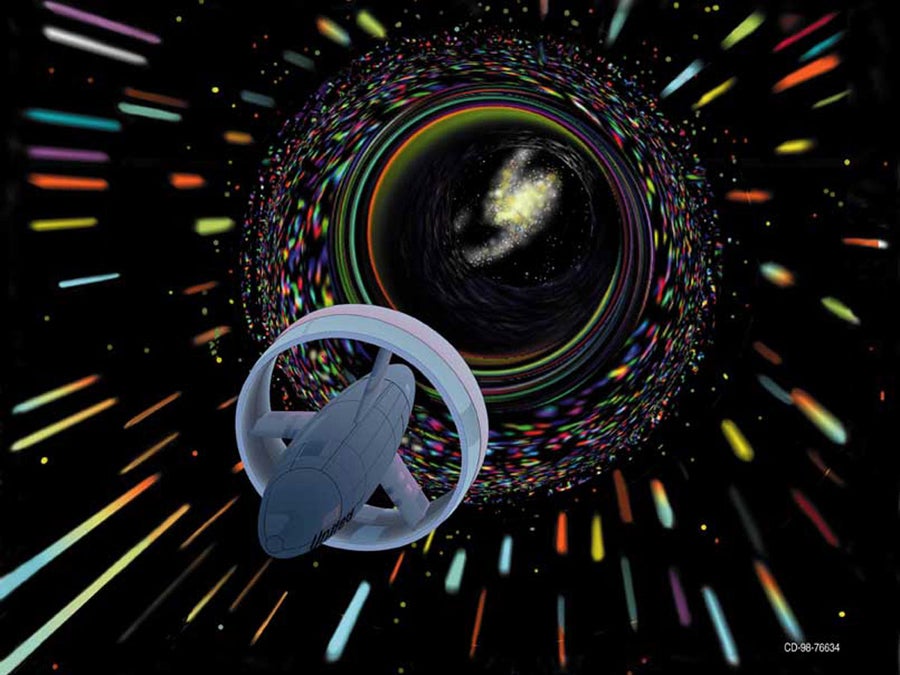
NASA artist’s 1998 rendition of warp drive travel. The ring around the spacecraft generates a negative-energy field. From today’s perspective, the negative-energy field would no longer be necessary. Credit: NASA; Digital art by Les Bossinas (Cortez III Service Corp)
For that very reason, imaginative physicists have long been pondering the ultimate propulsion system: a bubble in space and time in which a spaceship could dash from sun to sun, just like the USS Enterprise did. This is research at the fringe of science: not necessarily wrong but spiced with a large pinch of optimism.
The fact that scientists are dealing with the idea at all today is thanks to a 1994 paper by Mexican theoretical physicist Miguel Alcubierre. At the time, Alcubierre was not just a passionate Star Trek devotee. In his doctoral thesis at the University of Wales College Cardiff (now Cardiff University), Alcubierre also worked on the theory of relativity. Strictly speaking, the theory states that nothing can travel faster than light. But by applying a little creativity, Alcubierre identified an apparent loophole.
For physicists, Albert Einstein’s theory of relativity consists of two parts: The “special” theory of relativity, which dates from 1905, deals with the uniform motion of fast-as-light objects. Ten years later Einstein generalized these ideas for accelerating bodies. According to “general” relativity, the three spatial dimensions we are familiar with (up-down, left-right, front-back) are inseparable from time. Every mass deforms this spacetime.
According to Albert Einstein’s epic discovery, we live in four-dimensional “spacetime.” Spacetime is not static. Like a tablecloth, it is deformed by massive objects. Everything that moves across the tablecloth (or through spacetime) can accelerate only up to the speed limit set by light. The tablecloth itself, on the other hand, can be deformed at any speed, as the universe itself shows in some situations.
At the instant of the big bang, for example, the original spacetime structure presumably expanded for a split second and did so much faster than any ray of light could travel. Even today, the expansion continues to drive extremely distant galaxies away at speeds faster than light, which means their light can no longer reach us.
Based on his discovery, Alcubierre surmised that it would only be a small step to a warp drive. If spacetime were contracted in front of a spaceship and expanded behind it to compensate, it would be possible to travel to one’s destination at a speed faster than light. The ship would remain encapsulated in a bubble, and the crew would not sense the magnitude of the interstellar journey. In a 2017 lecture, Alcubierre compared it to being on a passenger conveyor belt at the airport: “You can imagine that the floor behind you is being created out of nothing and in front of you it is being destroyed, so you move along.”
But formulating this idea in the language of general relativity immediately gives rise to major practical problems. First, to deform spacetime so radically, you would need to cram a huge mass into a bubble bounded by a wall thinner than an atomic nucleus. Then you would need two forms of matter to maintain the bubble. The gravity of ordinary mass would cause the space at the front of the bubble to contract, moving the whole structure forward. But at the same time, the space at the back of the bubble would need to expand like rising bread dough. To make that expansion happen, according to Alcubierre, you would need some form of negative energy radiating a kind of antigravity.
The Curse of Negative Energy
For most physicists, that was the end of the thought experiment. Energy—which according to Einstein’s formula E = mc2 is equivalent to unconstrained mass—seems like it must, by definition, be positive. But according to quantum theory, it can indeed have a negative value. This seems to occur only in rare special cases, however—on a tiny scale. In the so-called Casimir effect , for example, the quantities involved are so minuscule that any technological application seems absurd.
Alcubierre, now a professor of physics at the National Autonomous University of Mexico, concedes this point. In terms of a potential technology, warp drives “are greatly lacking,” he and one of his colleagues wrote in a recent preprint paper . He has now turned his attention to known phenomena, such as black holes. The warp drive concept, however, retains its fascination, especially for Trekkies—and for a few gravitational physicists, who occasionally publish variations on the idea.
Some of these papers have shown how to reduce the bubble’s mass requirements so that the total mass needed to deform spacetime would be less than that of our sun. But no one was able to get around the problem of negative energy—until Lentz took it up during the lockdown in Göttingen. In his enforced isolation, Lentz found a way to construct a warp bubble using only positive energy. In so doing, he may have overcome the greatest objection to warp drives.
What made it possible was a special feature of the geometry of spacetime that Lentz discovered buried in the general theory of relativity—more precisely, in Einstein’s field equations. These equations can calculate how a particular distribution of matter and energy deforms spacetime. Researchers can also use them, as Alcubierre did, to determine the mass and energy needed to produce a specific curvature of space.
Dealing with a dynamic, four-dimensional structure like spacetime is extremely complicated, however. Writing out Einstein’s formulas in full produces a jumble of nested differential equations with thousands of terms. Depending on the assumptions you make about a particular physical situation, you only take some of those terms into account. For theorists, it is an almost limitless playground.
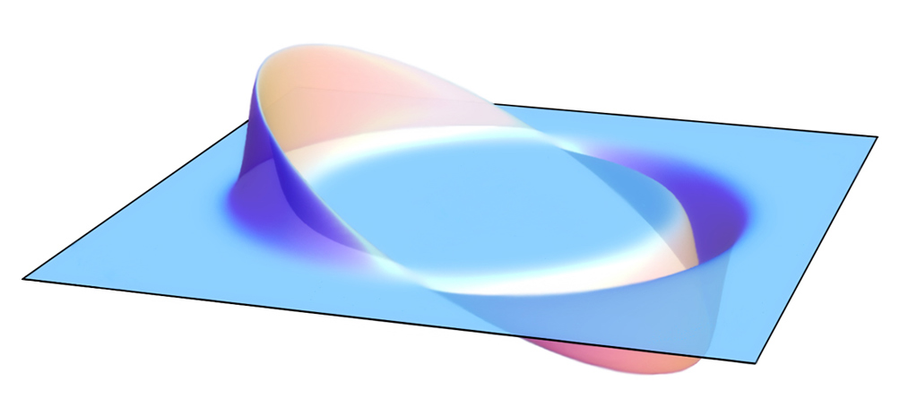
Principle of the Alcubierre drive: Spacetime contracts at the front of the bubble (right), corresponding to a warp in spacetime. Behind the bubble (left), new space is created out of nothing, which is equivalent to stretching spacetime. Credit: AllenMcC Wikimedia (CC BY-SA 3.0)
Lentz specifically examined the assumptions leading to the negative energy requirements in Alcubierre’s work. Like his colleague, Lentz began by analyzing spacetime, modeling the multidimensional substance as a stack of very thin layers. He found that Alcubierre had only considered comparatively simple “linear” relationships between the equations for shifting one layer onto the next. At this point, choosing more complex “hyperbolic” relations, which typically express rapidly changing quantities, results in a different warp bubble than the one obtained by Alcubierre. It still requires enormous amounts of mass and energy but, according to Lentz’s calculations, only positive amounts. “I was very surprised that no one had tried this before me,” Lentz says.
Lentz’s bubble looks different from the one Alcubierre worked out in 1994. It consists of diamond-shaped regions of altered spacetime that resemble a flock of birds. Creating such a spacetime geometry in reality would involve a complicated layering of rings and disks, not made of solid material but of an extremely dense fluid of charged particles, similar to the substance found in the interior of neutron stars, Lentz says.
That means near-light-speed travel is still very, very far away from applied technology. But now that no exotic negative energy densities are needed—at least according to Lentz’s latest work—the theoretical games are within the realm of established physics. Alcubierre describes Lentz’s paper as a “very important development.” Francisco Lobo, a researcher at the University of Lisbon and a colleague of Alcubierre’s, who has published a textbook on warp drives, cannot find any obvious errors either. “If correct, this has the potential of opening up new interest and novel avenues of research in warp drive physics,” he says.
Lentz’s idea has even aroused interest among researchers outside the small community of warp drive enthusiasts, including Lavinia Heisenberg, a professor of cosmology at the Swiss Federal Institute of Technology Zurich. Heisenberg and her student Shaun Fell found Lentz’s paper so exciting that they built on it by designing their own positive-energy warp bubbles that would require as little as a thousandth of the mass of our sun.
“The whole thing is much less mysterious than most people assume,” says Alexey Bobrick , an astrophysicist at Lund University in Sweden. Collaborating with New York City–based entrepreneur Gianni Martire, Bobrick came up with some promising solutions to Einstein’s field equations in 2020. According to Bobrick, all that is needed for a warp bubble is an appropriately shaped shell made of dense material that bends spacetime in its immediate vicinity while the universe through which the bubble moves and the space within the shell remain comparatively undisturbed.
Time Goes by So Slowly
“Comparatively” is the key. Alcubierre and later warp architects assumed an abrupt transition between the contorted spacetime in the wall of the bubble and the smooth interior and exterior. But Bobrick and Martire found this “truncation” of the gravitational field to be the reason why large amounts of negative energy are required to stabilize the contortion of space and time.
Abandoning the cartoonish image of a soap bubble, however, makes it possible to build warp drives based on ordinary matter, they claim. The gravitational field would not simply disappear when one moved away from the wall of the shell. Instead it would gradually decay. Spacetime would therefore also be curved inside the bubble. To travelers in a spaceship right in the middle of the bubble, this phenomenon would be most obvious in the passage of time: their watches would go slower than in the rest of space because, according to the theory of relativity, time is affected by gravity.
The slower passage of time on a spaceship might be something interstellar travelers appreciate. Still, Bobrick and Martire describe other obstacles. So far, they argue, there is no known way to actually accelerate a warp bubble. All previous ideas about the subject simply assume that the curvature of spacetime is already moving at high speed.
A beam of light travels 299,000 kilometers per second. According to Einstein’s special theory of relativity, this is a physical constant. The speed of light is the maximum speed any particle may reach, and a particle can only do so if it has no mass. Consequently, today’s physics offers no possibility of accelerating objects beyond the speed of light. On closer inspection, however, this limit only applies within the four-dimensional spacetime comprising the universe. Outside of that, even greater speeds appear to be possible.
“None of the physically conceivable warp drives can accelerate to speeds faster than light,” Bobrick says. That is because you would require matter capable of being ejected at speeds faster than light—but no known particles can travel that fast. Furthermore, the bubble could not be controlled by occupants of the spaceship itself because they would lose contact with the outside world, owing to the extremely strong curvature of space around them.
Lentz sees these objections as a problem, too, but he believes a solution can be found. Bobrick, meanwhile, points out that it is also possible to travel to distant stars at a third or half the speed of light, especially if time passes more slowly for the people in the warp bubble. Just do not think about the fact that all your relatives left behind on Earth will probably have died of old age before you get back. “But at least the idea is no longer completely crazy,” Bobrick says.
From Theory to Practice
There is still some debate about whether warp bubbles really can do without negative energy. Recently, three theoreticians suggested that this claim was only true for observers moving next to the bubble. Plus, not everything that seems possible according to the theory of relativity actually exists—or is technologically feasible. For example, Einstein’s field equations can also be used to justify “white” holes (the antithesis of their black hole counterparts), Einstein-Rosen bridges (frequently called wormholes) and other exotic alterations in spacetime that no one has ever observed. That could be because laws of nature, as yet unknown, preclude such phenomena.
Some researchers therefore caution against going overboard with the fantasies. Space propulsion expert Martin Tajmar of the Technical University of Dresden, for example, sees no practical relevance for the current work on warp drives. The huge masses involved simply exceed anything that can be tested on Earth, he says.
Most veteran warp drive researchers would undoubtedly agree. They see their work less as preparation for real-world experiments and more as a way of exploring the limits of relativity. In this endeavor, even speculative “thought experiments” are useful, Lobo says.
Lentz, on the other hand, is actively working toward a practical application of his idea. After his research in Göttingen, he took a job at an IT company. But in his spare time, he still thinks about how to accelerate a bend in spacetime to speeds faster than light and how to reduce the energy required to do so.
Lentz also advocates looking closely at the surroundings of neutron stars. It could be that these ultracompact stellar remnants eject bubbles like those that he describes in his paper. “As long as one doesn’t let personal biases get in the way and accepts what evidence tells you, it’s a field of research that is as worthy of being pursued as any other,” he says.
Jean-Luc Picard would probably see it similarly. “Things are only impossible until they are not,” the character noted in an episode of Star Trek: The Next Generation . But that’s also easier to say when you live 300 years in the future.
This article originally appeared in Spektrum der Wissenschaft and was reproduced with permission

- June 5, 2024 | How a Single Gram of Salt Can Aggravate Your Eczema
- June 5, 2024 | Unlocking Parental Powers in the Digital Battle With Tweens
- June 5, 2024 | Bone Medications Transform Into Fungal Fighters in Groundbreaking Study
- June 5, 2024 | New “Cost-Effective” Plan Could Reduce CO2 Emissions by 20% – However, It Still Costs Billions of Dollars
- June 5, 2024 | Historic Record Smashed by Cosmonaut as Spacewalk and Starliner Preparations Unfold
Warp Drives and Negative Energy: Physicists Give Chances of Faster-Than-Light Space Travel a Boost
By Mario Borunda, Oklahoma State University May 16, 2021
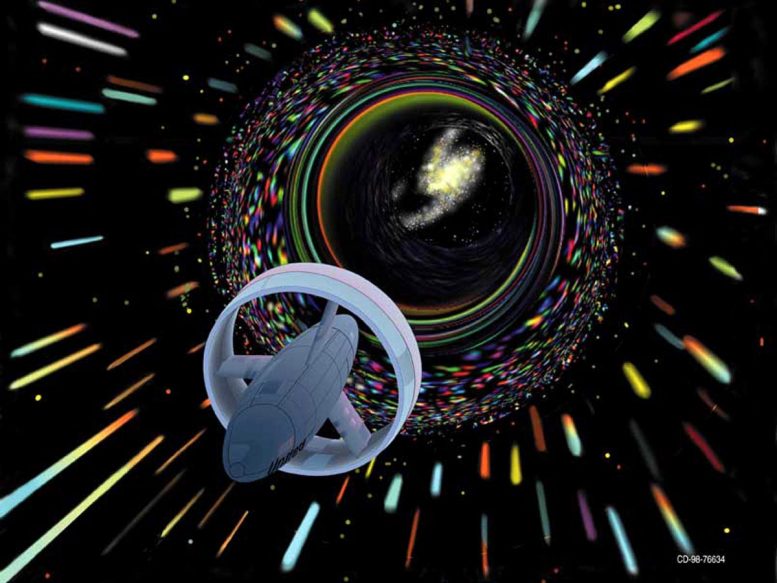
Faster than light travel is the only way humans could ever get to other stars in a reasonable amount of time. Credit: NASA
The closest star to Earth is Proxima Centauri. It is about 4.25 light-years away, or about 25 trillion miles (40 trillion km). The fastest ever spacecraft, the now-in-space Parker Solar Probe will reach a top speed of 450,000 mph (201 km/s). It would take just 20 seconds to go from Los Angeles to New York City at that speed, but it would take the solar probe about 6,633 years to reach Earth’s nearest neighboring solar system.
If humanity ever wants to travel easily between stars, people will need to go faster than light. But so far, faster-than-light travel is possible only in science fiction.
In Issac Asimov’s Foundation series, humanity can travel from planet to planet, star to star or across the universe using jump drives. As a kid, I read as many of those stories as I could get my hands on. I am now a theoretical physicist and study nanotechnology, but I am still fascinated by the ways humanity could one day travel in space.
Some characters – like the astronauts in the movies “Interstellar” and “Thor” – use wormholes to travel between solar systems in seconds. Another approach – familiar to “Star Trek” fans – is warp drive technology. Warp drives are theoretically possible if still far-fetched technology. Two recent papers made headlines in March when researchers claimed to have overcome one of the many challenges that stand between the theory of warp drives and reality.
But how do these theoretical warp drives really work? And will humans be making the jump to warp speed anytime soon?
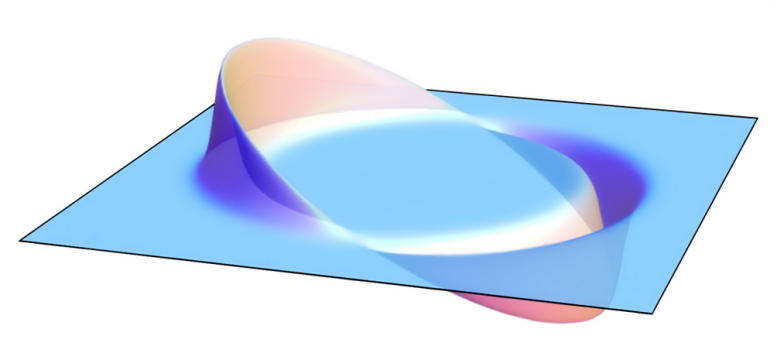
This 2-dimensional representation shows the flat, unwarped bubble of spacetime in the center where a warp drive would sit surrounded by compressed spacetime to the right (downward curve) and expanded spacetime to the left (upward curve). Credit: AllenMcC/Wikimedia Commons
Compression and expansion
Physicists’ current understanding of spacetime comes from Albert Einstein’s theory of General Relativity. General Relativity states that space and time are fused and that nothing can travel faster than the speed of light. General relativity also describes how mass and energy warp spacetime – hefty objects like stars and black holes curve spacetime around them. This curvature is what you feel as gravity and why many spacefaring heroes worry about “getting stuck in” or “falling into” a gravity well. Early science fiction writers John Campbell and Asimov saw this warping as a way to skirt the speed limit.
What if a starship could compress space in front of it while expanding spacetime behind it? “Star Trek” took this idea and named it the warp drive.
In 1994, Miguel Alcubierre, a Mexican theoretical physicist, showed that compressing spacetime in front of the spaceship while expanding it behind was mathematically possible within the laws of General Relativity . So, what does that mean? Imagine the distance between two points is 10 meters (33 feet). If you are standing at point A and can travel one meter per second, it would take 10 seconds to get to point B. However, let’s say you could somehow compress the space between you and point B so that the interval is now just one meter. Then, moving through spacetime at your maximum speed of one meter per second, you would be able to reach point B in about one second. In theory, this approach does not contradict the laws of relativity since you are not moving faster than light in the space around you. Alcubierre showed that the warp drive from “Star Trek” was in fact theoretically possible.
Proxima Centauri here we come, right? Unfortunately, Alcubierre’s method of compressing spacetime had one problem: it requires negative energy or negative mass.
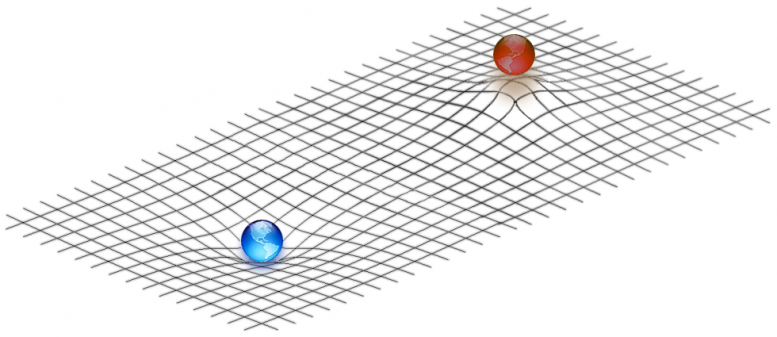
This 2–dimensional representation shows how positive mass curves spacetime (left side, blue earth) and negative mass curves spacetime in an opposite direction (right side, red earth). Credit: Tokamac/Wikimedia Commons, CC BY-SA
A negative energy problem
Alcubierre’s warp drive would work by creating a bubble of flat spacetime around the spaceship and curving spacetime around that bubble to reduce distances. The warp drive would require either negative mass – a theorized type of matter – or a ring of negative energy density to work. Physicists have never observed negative mass, so that leaves negative energy as the only option.
To create negative energy, a warp drive would use a huge amount of mass to create an imbalance between particles and antiparticles. For example, if an electron and an antielectron appear near the warp drive, one of the particles would get trapped by the mass and this results in an imbalance. This imbalance results in negative energy density. Alcubierre’s warp drive would use this negative energy to create the spacetime bubble.
But for a warp drive to generate enough negative energy, you would need a lot of matter. Alcubierre estimated that a warp drive with a 100-meter bubble would require the mass of the entire visible universe .
In 1999, physicist Chris Van Den Broeck showed that expanding the volume inside the bubble but keeping the surface area constant would reduce the energy requirements significantly , to just about the mass of the sun. A significant improvement, but still far beyond all practical possibilities.
A sci-fi future?
Two recent papers – one by Alexey Bobrick and Gianni Martire and another by Erik Lentz – provide solutions that seem to bring warp drives closer to reality.
Bobrick and Martire realized that by modifying spacetime within the bubble in a certain way, they could remove the need to use negative energy. This solution, though, does not produce a warp drive that can go faster than light.
Independently, Lentz also proposed a solution that does not require negative energy. He used a different geometric approach to solve the equations of General Relativity, and by doing so, he found that a warp drive wouldn’t need to use negative energy. Lentz’s solution would allow the bubble to travel faster than the speed of light.
It is essential to point out that these exciting developments are mathematical models. As a physicist, I won’t fully trust models until we have experimental proof. Yet, the science of warp drives is coming into view. As a science fiction fan, I welcome all this innovative thinking. In the words of Captain Picard , things are only impossible until they are not.
Written by Mario Borunda, Associate Professor of Physics, Oklahoma State University.
Adapted from an article originally published on The Conversation .
More on SciTechDaily

Aging’s Antidote? The Crucial Role of HKDC1 in Keeping Cells Youthful

Meltwater Pulse 1A: Melting Ice Sheets Caused Sea Levels to Rise Up to 18 Meters

Illuminating Life’s Origins: Uncovering the Synthesis of Sugars on Ancient Earth

Unlocking the Mysteries of the Bio/Nano Interface

CRISPR-HOT: New Genetic Tool Can Label Specific Genes and Cells

Simulating the Cosmos: Is a Miniature Universe Possible?

Astronomers May Have Found the Secret Behind Mysterious Location of Massive Stars
The battle of the covid variants: a winning approach, 27 comments on "warp drives and negative energy: physicists give chances of faster-than-light space travel a boost".
Chinese Logicians School and their paradoxes aside for the time being: Even though it’s white, has wings and it’s name is Pegasus, it’s still a horse. It cannot fly and is as dead as the Mythology that spawned it. A dead horse is not a horse. Beat it all you want, it’s a deadhorse. Subtle Logic. Essentials and Essential Quality (Whiteness and Horse-ness) define a beast of a different color. Light is not a speed limit if everything is moving at the speed of light. It is more like a bullet fired off the trailing end of a speeding train. You can’t see it until it hits something… like your retina. The problem begins in the occipital lobe and migrates frontally. From there, it is only a matter of TIME… and the MANIFOLD UNIVERSE of the MIND: IT is all in how one looks at it.
Now… Back to the telescope and a cup of hot chocolate. Here’s looking at you. ☝️
Wow, that’s some deep brown matter, Alex, and I don’t mean the coffee.
Well… We ARE immersed in a wealth of brown matter. Orthodoxy notwithstanding, one can science the heck out of it, but it is a meaningless WASTE of human resources when misdirected: particularly when it is EXPENSIVE. It’s in the GREY MATTER, ultimately, the biases that allow us to poison our “home” planet on the promise of finding another one JUST LIKE IT. Good luck with that: not in a hundred lifetimes, even @ the speed o’ lite. To wit: Whatever we might aim our Lightships at, ISN’T THERE ANYMORE. WARP NINE, MUSTER WARF. MAKE IT SO. LOL What I was suggesting was a paradigm (that word) SHIFT. Ya know, like… maybe stand still, RELATIVELY SPEAKING, while Space moves past us. Forget about TIME for the time being. There is no way “around” it, but maybe there is a way outside of it. Some theorists are pursuing this line of reasoning. I have been “educated” to an insight: The solution is much simpler than our Science can imagine; as vested as it is in misconceptions about this ONE Universe, that belong in the Middle (muddle?) Ages, along with witches, goblins, the homunculus, god, seven days in the week and a paradigm of EXISTENCE hopelessly mired in its obsession with mortality and bodily functions; which is still trying to turn lead into gold, but fails at differentiating SH*T FROM SHINOLA. Call me IDEALISTIC… and I will correct your thinking. REALISTICALLY speaking, Pangloss, I GUESS was correct: We live in the BEST if all possible WORLDS…I have some land in Florida for sale. Real cheap. It only under water twice a day.
It’s not brain surgery.
BTW, I was drinking hot chocolate; a suggestion of a neurosurgeon friend who drinks it during prolonged surgeries (+6 hours). It contains a better form of caffeine than coffee; one that does not rattle the nerves. With the “work” he does, one little tremor and ZIP! there goes your memory of Aunt Tilly, or maybe just the memory of how to tie your own shoelaces…
👽 Keep looking up. ☝️
Why did you take out my comment on Dr. Lee and Synthetic Gravity demonstrated in Huntsville, Alabama in 1998? I realize the program went black, i.e., Beyond Top Secret and thus was scrubbed from the Internet by the year 2000.
Quantum information travels faster than light, so that is what everyone else in the universe exploits to travel to the stars. Quantum Tunneling Vehicles (QTV). They emulate an elementary particle by spinning a strong electric or magnetic field around a superconducting hull to engage a particle spreadsheet function. Altering and renormalizing the spin of the field should cause the universe to re-locate the ersatz particle. It’s a form of quantum teleportation, if you mess with the constancy of the spin field, you can trick the universe into changing it’s location. Electric tunneling vehicles would be oblate spheroids, magnetic tunneling vehicles would be cigar shaped. Classic UFO’s, saucers and cigars. Why don’t we just follow their lead? Or are we stupid cavemen who need rockets to fly through space? Classical physics has a speed limit, the speed of light. If you want to beat it safely, you have to play the quantum game instead. Fortunately, quantum information travels faster than light. Quantum laws govern the conservation laws, which are monitored on every particle in the universe at once. So if I can con the universe into thinking my ship is an elementary particle and that my “particle” belongs somewhere else, I’ll instantly find my “particle” there. The quantum machinery of reality is not subject to the limitations of the classical laws it emulates. The closest stars may be only hours or minutes away to a sophisticated Quantum Tunneling Vehicle. And if you need a lift vehicle that can hit orbit 20 rimes a day with no pollution, or go to Mars in minutes, all we need are room temperature superconductors and a lot of electricity.
You have something there. Generating a strong enough field will effectively create a “bubble” around which Time and Space will flow…at the Speed of light and beyond, as the “vector” of “flight” shortens in response to Space/Time distortion… Only a Theory. But it beats the Wile E. Coyote, strap a rocket to your ass, school of space travel. As in any Scientific theorising, the first SPACE one needs to overcome is the space between one’s ears. It is, after all, the Final Frontier.
Babu G. Ranganathan* (B.A. Bible/Biology)
JUST BECAUSE SCIENCE CAN EXPLAIN how an airplane works doesn’t mean that no one designed or made the airplane. And just because science can explain how life or the universe works doesn’t mean there was no Designer and Maker behind them.
Natural laws may explain how the order in the universe works and operates, but mere undirected natural laws cannot explain the origin of that order. Once you have a complete and living cell then the genetic code and biological machinery exist to direct the formation of more cells from raw materials such as amino acids and other chemicals, but how could life or the cell have naturally originated when no directing code and mechanisms existed in nature? Read my Internet article: HOW FORENSIC SCIENCE REFUTES ATHEISM.
WHAT IS SCIENCE? Science simply is knowledge based on observation. No human observed the universe coming by chance or by design, by creation or by evolution. These are positions of faith. The issue is which faith the scientific evidence best supports.
SCIENCE SHOWS THAT THE UNIVERSE CANNOT BE ETERNAL because it could not have sustained itself eternally due to the law of entropy (increasing and irreversible net energy decay, even in an open system). Even a hypothetical oscillating universe could not continue to oscillate eternally! Einstein’s General Theory of Relativity shows that space, matter, and time all are physical and all had a beginning. Space even produces particles because it’s actually something, not nothing. What about the Higgs boson (the so-called “God Particle”)? The Higgs boson, even if it existed, would not have created mass from nothing, but rather it would have converted energy into mass. Einstein showed that all matter is some form of energy. Even time had a beginning! Time is not eternal.
The law of entropy doesn’t allow the universe to be eternal. If the universe were eternal, everything, including time (which modern science has shown is as physical as mass and space), would have become totally entropied by now and the entire universe would have ended in a uniform heat death a long, long time ago. The fact that this hasn’t happened already is powerful evidence for a beginning to the universe.
Popular atheistic scientist Stephen Hawking admits that the universe had a beginning and came from nothing but he believes that nothing became something by a natural process yet to be discovered. That’s not rational thinking at all, and it also would be making the effect greater than its cause to say that nothing created something. The beginning had to be of supernatural origin because science teaches us from the First Law of Thermodynamics that natural laws and processes do not have the ability to bring something into existence from nothing.
The supernatural origin of the universe cannot be proved by science but science points to a supernatural intelligence and power for the origin and order of the universe. Where did God come from? Obviously, unlike the universe, God’s nature doesn’t require a beginning.
The disorder in the universe can be explained because of chance and random processes, but the order can be explained only because of intelligence and design.
Gravity may explain how the order found in the precise and orderly courses of thousands of billions of stars is maintained, but gravity cannot explain the origin of that order.
Some evolutionary astronomers believe that trillions of stars crashed into each other leaving surviving stars to find precise orderly orbits in space. Not only is this irrational, but if there was such a mass collision of stars then there would be a super mass residue of gas clouds in space to support this hypothesis. The present level of residue of gas clouds in space doesn’t support the magnitude of star deaths required for such a hypothesis. And, as already stated, the origin of stars cannot be explained by the Big Bang because of the reasons mentioned above. It’s one thing to say that stars may decay and die into random gas clouds, but it is totally different to say that gas clouds form into stars.
Even the father of Chaos theory admitted that the “mechanisms” existing in the non-living world allow for only very rudimentary levels of order to arise spontaneously (by chance), but not the kind or level of order we find in the structures of DNA, RNA, and proteins. Yes, individual amino acids have been shown to come into existence by chance but not protein molecules which require that the various amino acids be in a precise sequence just like the letters found in a sentence.
Some things don’t need experiment or scientific proof. In law there is a dictum called prima facie evidence. It means “evidence that speaks for itself.”
An example of a true prima facie would be if you discovered an elaborate sand castle on the beach. You don’t have to experiment to know that it came by design and not by the chance forces of wind and water.
If you discovered a romantic letter or message written in the sand, you don’t have to experiment to know that it was by design and not because a stick randomly carried by wind put it there. You naturally assume that an intelligent and rational being was responsible.
It’s interesting that Carl Sagan would have acknowledged sequential radio signals in space as evidence of intelligent life sending them, but he wouldn’t acknowledge the sequential structure of molecules in DNA (the genetic code) as evidence of an intelligent Cause. Read my popular Internet article, HOW DID MY DNA MAKE ME.
I encourage all to read my popular Internet articles:
NATURAL LIMITS TO EVOLUTION HOW FORENSIC SCIENCE REFUTES ATHEISM
Visit my latest Internet site: THE SCIENCE SUPPORTING CREATION (This site answers many arguments, both old and new, that have been used by evolutionists to support their theory)
Author of popular Internet article, TRADITIONAL DOCTRINE OF HELL EVOLVED FROM GREEK ROOTS
*I have given successful lectures (with question and answer period afterwards) defending creation before evolutionist science faculty and students at various colleges and universities. I’ve been privileged to be recognized in the 24th edition of Marquis “Who’s Who in The East” for my writings on religion and science.
Strong is the wind that blows…
We should continue to search, yet it seems to me more effort is and should be placed on inner planetary travel. Nuclear rocket engines or even better fusion drive with impulses reaching 30,000 mps would open the planets and mining of asteroids. This would reduce travel time and fuel consumption making the inner planets give up their secrets and spread out mankind against catastrophe. I would love to travel to proxima centaury in what’s left of my life, it’s not going to happen. That’s why we have science fiction stories!
Warp drives and negative energy…either reduce mass beyond zero or…maybe a large time difference.. bubble with large time difference like helium vs. air…or tuning a radio to a different frequency than the natural surrounding space?
The way that the Star Trek’s warp dive works is that the Antimatter is stored because it needs a smaller area to contain it in a magnetic field. The Nacelles in the front is what collects the matter. They are called Bussard Collector. It then goes to a Dilithium Chamber where the Dilithium Crystals are. The matter and antimatter enters the chamber and instead of a violent explosion the Dilithium controls the explosion and is converted to warp plasma. The plasma then goes back to the nacelle where the Warp Plasma Coils are and creates the warp bubble and then bends the space in front of the ship.
SpaceTime idea seems like a 2D model. Living on Earth is a kind of gravity well that’s why we need massive energy to escape it pull down. I don’t but the ‘spacetime’ idea. Space is relative emptiness. Time is a measure of movement.
Thus far humans have been thinking of REpulsion methods of travel. Pretty much male thinking. But say you want to go towards a female, you can use ‘push’ but most importantly ‘pull’ method; ie: attraction A combination of pull(attraction) and push(repulsion) would work better.
Think of a plant. How does it grow towards the light? It produces a substance that captures and stores light energy and transfers it to the roots to push further into the soil. So a plant has a pull and push method/mechanism (ATP, is it?)
Now you want to go to another star system. Ok. Aim your light-capture device at the stars center mass. Begin light collection, storage and transfer. Expel light thru rear. This method is like using light as zipline. But what material could capture light energy, store and/or transfer it out causing the spacecraft to pull and push itself towards the destination?
Or maybe a light-attracting device in the bow and a light-repelling device in the stern. Lineup the ship between two stars and go. The bow pulls towards the destined/arrival star while the stern pushes off the source/departing star.
Another way or maybe related is a kind of lightplane that sucks in light and expells it (like an airplane). But what kind of engine & fuel would one need to suckin light, ‘combust it and expell it’?
Another idea is to run a ship on cosmic background radiation.
Think of how long it took ‘god’ to build an organism to build a telescope to see light from a distant star. Evolution got us here in about 4.5B years, right? How can we travel at the speed of imagination? We need light. Go towards the light.
1) Attract light and repel light. Photonic propulsiom? 2) Space is a relatively cold void, what cuts thru a cold void? Hot plasma? Plasma Drive? 3) Combination of engines/methods (all-in-one).
We can build and prepare for when our star goes supernova and surf that in all directions. ~4.5B years.
It makes sense that our star’s life cycle and consciousness would follow ours. At midlife, I am beginning to see what is possible and not for me. Sure I still wish and hope with imaginatiom, but time to get real. It follows that since this star made and sustains us that once its gone, so will we be. Unless perhaps if we link up to another star or to the supermassive giant star in our galactic core. And when that goes supernova we can surf that. When a star goes boom, it spreads its matter out. Its amazing enough that the star maintains a balanced fusion reaction, but that it also explodes or dies out as it loses mass. We don’t have to wait. I’m sure we can imagine something and mame it real. I mean can we even excite a particle to go at light speed? And 6k years is still shorter than waiting 4.5 billion years to be shot out like dead matter. I think we need to capture more energy from our star, concentrate it, build brains (organic & inorganic), swarm brains, augment/unify intelligence and consciousness. Maybe there is a way to recombine light coming from another star with light from our star to build particles/matter at the destined end by scanning ourselves from our end. Yes teleportation via 3D printing matter using light from destined star and energy from our star. In 4.5B years I think we can perfect this. (One issue is it might be less dense at the destined end.)
Imagination is the key; the crazier the better.
We might have to figure out a way to take our Earth mothership with us since we are wholly dependent on her ATM. Say within 4.5B years we would have been able to remake all the matter in the solar system into useful devices, basically remaking our planet & ourselves via 3D quantum plank’s length printing. Basically reshape all matter to our imagined consciousness. Priority is to extract more and more energy from our star then we’ll have more possibilities and if we figure out a hack can multiply virally throughout the galaxy increasing our chances. Seems destined and predetermimed. Energy capture & matter manipulation is key. We need sharper senses: better ‘nanoscopes’, better causal-logic processes, finer manipulation of matter, energy efficiency, more accurate theories & mathmatics…anything & everything; there is no limit to godliness.
how long would you say it would take to successfully and completely create said warp drive?
In truth, it took God one day to create the first human being without evolution. It took six days to create the whole Universe. He made us in his image, but not so that we ARE Gods, but his children. He is the God of creation, thus we should be creative, we will find a way to travel faster than the speed of light many times over.
In 2013, A group of us (named C-PLUSS) definitively proved that this proposed method for “warp drive” does not work the way that they say it works. The localised tidal-forces on space-time would be too much to bear. It can cause irreparable damage to local space-time. I have copies of our notes, our conclusions, and our recommendations for an alternative methodology to create a “warp drive”. C-PLUSS stands for the Committee to Propose Legitimate Ultra-luminal Speed Systems. I can be reached at [email protected] .
Leave a comment Cancel reply
Email address is optional. If provided, your email will not be published or shared.
Save my name, email, and website in this browser for the next time I comment.
Is NASA Actually Working On a Warp Drive?
Hyperspace, here we come!

- The Alcubierre drive uses a huge amount of energy to make a sort of fold-like pocket dimension.
- This technology is extremely far off , but thinking about it, experts say, could lead to breakthroughs .
Is NASA really working on . . . a warp drive ? An internal feasibility report suggests the agency might be, or at least that the idea of traveling through folded space is part of the NASA interstellar spaceflight menu.
The space agency isn’t building an engine that can approach the speed of light—yet. In the report, advanced propulsion physicist Harold "Sonny" White, PhD, now of Limitless Space , resolves a major paradox in the leading theoretical model for superluminal (faster than the speed of light) travel, what’s known as an Alcubierre warp drive.
The colloquial term “warp drive” comes from science fiction, most famously Star Trek. The faster-than-light warp drive of the Federation works by colliding matter and antimatter and converting the explosive energy to propulsion. The show suggests that this extraordinary power alone pushes the ship at faster-than-light speeds.
The Alcubierre drive, first proposed by theoretical physicist Miguel Alcubierre, conforms to Einstein’s theory of general relativity to achieve superluminal travel. It works a bit like the classic “tablecloth and dishes” party trick: The spaceship sits atop the tablecloth of spacetime, the drive pulls the fabric around it, and the ship is situated in a new place relative to the fabric.
Alcubierre describes spacetime expanding on one side of the ship and contracting on the other, thanks to an enormous amount of energy and a requisite amount of exotic matter—in this case, negative energy. Alcubierre's theory creates a kind of pocket in spacetime where a spaceship can operate outside of physics. He insists the requirement for exotic matter is not implausible within quantum mechanics.
The paradox holding back an Alcubierre, in addition to limitations like a lack of negative energy density, is that the direction of a spacecraft is arbitrary when the drive is used—there’s no steering it. Sci-fi has solved this paradox with “stable wormholes,” but NASA can’t fly a deus ex machina to Alpha Centauri.
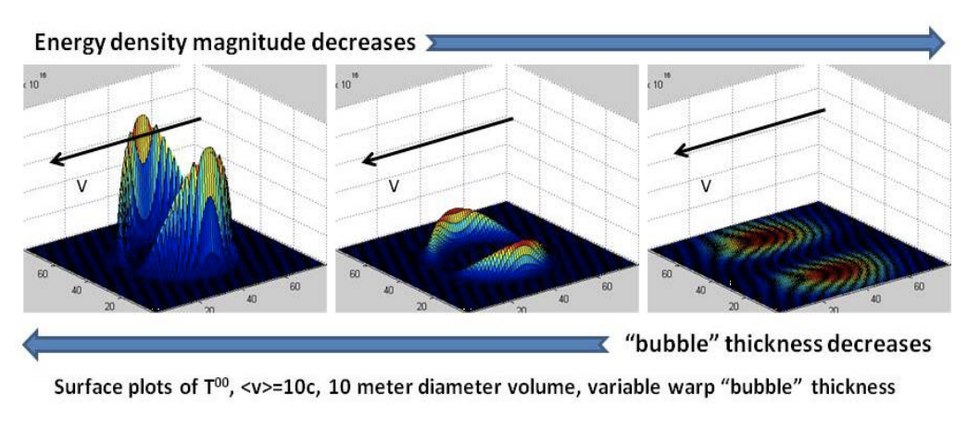
So White suggests a different paradigm in his report. Instead of a stationary spacecraft engaging the Alcubierre drive from a stopped position, White explains, “In this modified concept, the spacecraft departs earth, establishes an initial subluminal velocity, then initiates the field. The field’s boost acts on the initial velocity as a scalar multiplier, resulting in a much higher apparent speed.” The ship would use a rolling start as a directional cue.
In 2011, White conducted a field sensitivity analysis on Alcubierre’s model to see if he could shake loose any new insights. He found that Alcubierre’s original drive creates a relatively weak field, with negative vacuum energy on the side of the craft being pushed through a fold in spacetime. By making a more robust field, White says, “you could reduce the strain on spacetime so the amount of energy the trick takes to work is significantly reduced. Think metric ton as opposed to Jupiter.”
White suggests the proving ground for warp speed could be closer to home than the nearest stars. If scientists can make the so-called “negative mass” required for an Alcubierre drive, even a tiny example could be deployed within Earth’s atmosphere. “[T]he idea of a warp drive may have some fruitful domestic applications ‘subluminally,’ allowing it to be matured before it is engaged as a true interstellar drive system,” he explains.
An early example could drastically increase speed and reliability of carrying payloads into space. Using a small “beginner” warp drive, White suggests, will give scientists something to iterate as they grow the technology.

Caroline Delbert is a writer, avid reader, and contributing editor at Pop Mech. She's also an enthusiast of just about everything. Her favorite topics include nuclear energy, cosmology, math of everyday things, and the philosophy of it all.

.css-cuqpxl:before{padding-right:0.3125rem;content:'//';display:inline;} Science .css-xtujxj:before{padding-left:0.3125rem;content:'//';display:inline;}

A Colossal Squid Might Have Shown Its Secret Face

We May Have Finally Solved the Puzzle of Seahenge

The Cuckoo Is Evolving to Outsmart Host Species

A Tectonic Enigma Is Hiding Under the Ocean Floor

A New Alloy Is Defying the Limits of Metal

Experts Find Objects from 2,000-Year-Old Society

Stash of Ancient Canoes Found Buried in Wisconsin

Humans May Be Able to Grow New Teeth in 6 Years

Hawaiian Volcano Opens New Category of Eruption

Scientists Finally Reveal Secrets of Promethium

Odd 2,000-Year-Old Horse Remains Discovered
Advertisement
How Warp Speed Works
- Share Content on Facebook
- Share Content on LinkedIn
- Share Content on Flipboard
- Share Content on Reddit
- Share Content via Email
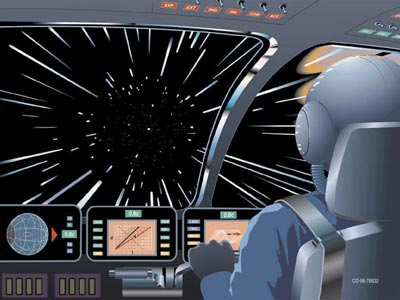
Onboard the starship Enterprise, you're hanging out with the crew members, enjoying a game of poker . You're traveling at impulse speed during a leisurely deep-space exploration, and everyone has some downtime. But wait -- all of a sudden, the ship receives an urgent message from a Federation admiral, informing the crew of an outbreak of war in the Neutral Zone. The Enterprise is ordered to report to the situation as soon as possible. The area in question is about 20 light years (117 trillion kilometers) away, but this is no problem in the "Star Trek" universe. The captain adjusts the ship's warp drive appropriately, and you settle in for warp speed . Traveling faster than the speed of light , you should arrive to your destination in just a few minutes.
For as long as humans have looked up to the skies, space has fascinated us, and astronomers and philosophers alike have asked the most fundamental questions while staring at the stars . What are we doing here, anyway? How did the universe begin, and are there other, parallel universes that mirror ours? Is there life out there in other galaxies , and what would it be like to travel there?
While we haven't quite answered these questions yet, we at least have science fiction like "Star Trek" to test the human imagination. Everything from H.G. Wells' "The Time Machine" to "Star Trek" to Joss Whedon's "Firefly" series has touched on the possibilities of time travel , teleportation and, of course, warp speed. But how does something like warp speed fit into reality and our universe? Is warp speed just a wacky science fiction device, or is it theoretically possible? How does it work in the "Star Trek" universe? For everything on warp speed, infinity and beyond, read the following pages.
Newton's Third Law of Motion
Einstein, relativity and the space-time continuum, the warp drive, problems with warp speed.

When the writers of "Star Trek" sat down to plan the series, they found themselves confronted with a few problems. They were essentially creating a space opera , a subgenre of science fiction that takes place in space and covers the span of several galaxies and millions of light years. The "Star Wars" films are another example of the space opera subgenre. As the "opera" part of the name suggests, a show like "Star Trek" isn't meant to be slow or ordinary -- when people think of the series, they probably think of melodramatic plots involving aliens , space travel and action-packed laser fights.
So the creator of the series, Gene Roddenberry, and the other writers had to find a way to move the show's characters around the universe in a timely, dramatic fashion. At the same time, they wanted to do their best to stick to the laws of physics. The biggest problem was that even if a starship could travel at the speed of light, the time to go from one galaxy to another could still take hundreds, maybe thousands of years. A journey from the Earth to the center of our galaxy, for example, would take about 25,000 years if you were to travel just under the speed of light. This, of course, wouldn't make very exciting television.
The invention of warp speed solved the opera part of the problem, since it allowed the Enterprise to go much faster than the speed of light. But what was the explanation? How could they explain an object traveling faster than the speed of light, something Einstein proved impossible in his Special Theory of Relativity ?
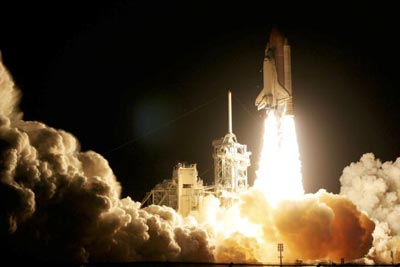
The first obstacle the writers had to confront is much simpler than you'd think. One of the most important things you need to know before understanding warp speed is actually one of the oldest tricks in the physics book, Newton's Third Law of Motion . You've probably heard it before -- this law states that for every action, there is an equal and opposite reaction. It simply means that for every interaction between two objects, a pair of forces is working on both of them. For instance, if you roll one billiard ball straight into another one that's at rest, they will both exert an equal force on each other. The moving ball will hit the ball at rest and push it away, but it will also be pushed back by the latter.
You feel this law come into play every time you accelerate in a car or fly in an airplane . As the vehicle speeds up and moves forward, you feel pressure on your seat. The seat is pushing on you, but you're also exerting a force against the seat.
So what does this have to do with "Star Trek" and the Enterprise? Even if it were possible to accelerate to something like half the speed of light, such intense acceleration would kill a person by smashing him against his seat. Even though he'd be pushing back with an equal and opposite force, his mass compared to the starship is just too small -- the same kind of thing happens when a mosquito hits your windshield and splatters. So how can the Enterprise possibly go faster than the speed of light without killing the members on board?
In the next section, we'll see how the "Star Trek" creators began to get around the problem of sending matter through space at superluminal speeds.
In order to sidestep the issue of Newton's Third Law of Motion and the impossibility of matter traveling faster than the speed of light , we can look to Einstein and the relationship between space and time . Taken together, space, consisting of three dimensions (up-down, left-right, and forward-backward) and time are all part of what's called the space-time continuum .
It's important to understand Einstein's work on the space-time continuum and how it relates to the Enterprise traveling through space. In his Special Theory of Relativity , Einstein states two postulates:
- The speed of light (about 300,000,000 meters per second) is the same for all observers, whether or not they're moving.
- Anyone moving at a constant speed should observe the same physical laws.
Putting these two ideas together, Einstein realized that space and time are relative -- an object in motion actually experiences time at a slower rate than one at rest. Although this may seem absurd to us, we travel incredibly slow when compared to the speed of light, so we don't notice the hands on our watches ticking slower when we're running or traveling on an airplane. Scientists have actually proved this phenomenon by sending atomic clocks up with high-speed rocket ships. They returned to Earth slightly behind the clocks on the ground.
What does this mean for the Captain Kirk and his team? The closer an object gets to the speed of light, that object actually experiences time at a significantly slower rate. If the Enterprise were traveling safely at close to the speed of light to the center of our galaxy from Earth, it would take 25,000 years of Earth time. For the crew, however, the trip would probably only take 10 years.
Although that timeframe might be possible for the individuals onboard, we're presented with yet another problem -- a Federation attempting to run an intergalactic civilization would run into some problems if it took 50,000 years for a starship to hit the center of our galaxy and come back.
So the Enterprise has to avoid the speed of light in order to keep the passengers onboard in synch with Federation time. At the same time, it also must reach speeds faster than that of light in order to move around the universe in an efficient manner. Unfortunately, as Einstein states in his Special Theory of Relativity, nothing is faster than the speed of light. Space travel therefore would be impossible if we're looking at the special relativity.
That's why we need to look at Einstein's later theory, the General Theory of Relativity , which describes how gravity affects the shape of space and flow of time. Imagine a stretched-out sheet. If you place a bowling ball in the middle of the sheet, the sheet will warp as the weight of the ball pushes down on it. If you place a baseball on the same sheet, it will roll towards the bowling ball. This is a simple design, and space doesn't act like a two-dimension bed sheet, but it can be applied to something like our solar system -- more massive objects like our sun can warp space and affect the orbits of the surrounding planets. The planets don't fall into the sun, of course, because of the high speeds at which they travel.
On the next page, we'll see how this comes into play on the Enterprise.
The ability to manipulate space is the most important concept in regard to warp speed. If the Enterprise could warp the space-time continuum by expanding the area behind it and contracting the area in front, the crew could avoid going the speed of light . As long as it creates its own gravitational field, the starship could travel locally at very slow velocities, therefore avoiding the pitfalls of Newton's Third Law of Motion and keeping clocks in sync with its launch site and destination. The ship isn't really traveling at a "speed," per se -- it's more like it's pulling its destination toward it while pushing its starting point back.
Because the ideas behind Einstein's General Theory of Relativity are complex and still open to interpretation, this leaves the possibilities wide open for science fiction writers. We may not know how to bend space and time with our current technology, but a fictional civilization set in the future may be completely capable of inventing such a device with the right imagination.
In the "Star Trek" universe, warp speed is accomplished through the use of a warp drive . The warp drive is powered by matter- antimatter reactions, which are regulated by a substance called dilithium . This reaction creates highly-energetic plasma known as electro-plasma , a type of matter with its own magnetic field, which reacts with the starship's warp coils . The warp coils are typically enclosed in what the "Star Trek" writers call a warp nacelle . The whole package creates a "warp field" or "bubble" around the Enterprise, allowing the ship and its crew to remain safe while space manipulates around them.
Sometime between the first television series ("Star Trek: The Original Series") and the second ("Star Trek: The Next Generation"), the writers decided to assign a limit to warp speed -- using a scale of Warp-1 to Warp-10, the Enterprise wasn't allowed to travel just anywhere at anytime, seeing as that would make plotting too easy. In the show, Warp-10 became an impossible maximum speed, an infinity in which the starship would be at all points in the universe at the same time. Warp-9.6, according to the "Next Generation" technical manual, is the highest attainable speed allowed -- it's set at 1,909 times the speed of light. Although there are some inconsistencies, the following list the different speeds in the "Star Trek" universe:
In the next section, we'll take a look at some of the problems the concept of warp speed encounters.
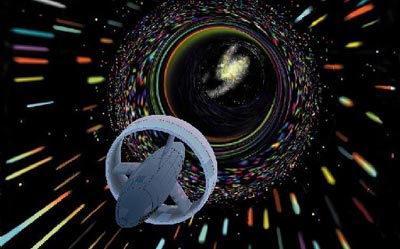
So Einstein helped the "Star Trek" writers manipulate space in a science fictional universe, but is it actually possible to build a spaceship that could propel people across vast galaxies in a relatively short period of time?
Physicist Miguel Alcubierre has suggested the use of so-called "exotic matter," a theoretical type of matter with negative energy. If it could be found or created, the exotic matter would do the job of repelling space and time and creating the gravitational field.
Unfortunately, that's as far as it goes for possible fuel sources -- there are more problems than solutions when it comes to the concept of powering warp speed. Even if the Enterprise were to travel at sublight speeds, known as impulse drive to "Star Trek" fans, the amount of fuel and energy needed to travel quickly through space would be too much for a single starship. The impulse drive of the Enterprise is powered by nuclear fusion, the same kind of reaction that lights up the sun and creates huge explosions from certain nuclear bombs . According to Dr. Lawrence Krauss, a theoretical physicist and author of "The Physics of Star Trek," if Captain Kirk wanted to travel at half the speed of light (150,000 kilometers per second), the starship would need to burn 81 times its mass in hydrogen, the fuel used for nuclear fusion. The technical manual for "Star Trek: The Next Generation" lists the Enterprise as more than 4 million metric tons in weight, so the ship would need more than 300 million metric tons of hydrogen just to move forward. Of course, to slow down to a stop, the starship would need yet another 300 million metric tons of fuel, and a potential trip across galaxies would need 6,642 times the mass of the "Enterprise."
Some people have proposed a system in which a device gathers hydrogen as the starship travels, foregoing the necessity to store huge amounts of fuel, but Krauss suggests this device would have to be about 25 miles wide to capture anything worth using. Even though hydrogen is the most abundant element in the galaxy, there's only about one atom of hydrogen for every cubic square inch.
Making the warp drive work would be another thing. The warp drive in "Star Trek" gets its power by reacting matter with antimatter -- the result is complete annihilation and the release of pure energy. Since antimatter isn't very common throughout our universe, the Federation would have to produce it, something we can do today at the Fermi National Accelerator Laboratory (Fermilab) in Illinois. Again, the problem turns out to be a issue of the amount of fuel necessary to power a warp drive. Kruass notes that Fermilab is capable of producing 50 billion antiprotons in one hour -- enough to produce 1/1000 of a watt. You would need 100,000 Fermilabs to power a single light bulb . Producing enough antiprotons to bend the space-time continuum looks near impossible as far as our current technology goes.
Although there's little chance during this century of humans developing a spaceship that could bend space and travel to distant galaxies faster than the speed of light, this hasn't stopped scientists and fans of the series alike to think about the potential. As recent as November 2007, the British Interplanetary Society brought together several physicists for a conference called "Faster Than Light: Breaking the Interstellar Distance Barrier" [source: Guardian ].
Lots More Information
Related Articles
- How Lightsabers Work
- How the Batmobile Works
- How Antimatter Spacecraft Will Work
- How Rocket Engines Work
- How Special Relativity Works
- Do parallel universes really exist?
- How Time Travel Will Work
- How Teleportation Will Work
- How Santa's Sleigh Works
- How does Santa make it around the world in one night?
- How Sci-Fi Doesn't Work
More Great Links
- StarTrek.com
- Coen, Chad. "The science of Star Trek." National Geographic. Dec. 13, 2002. http://news.nationalgeographic.com/news/ 2002/12/1213_021213_tvstartrek.html
- Krauss, Lawrence. "The Physics of Star Trek." New York: Basic Books, 2007.
- Okuda, Michael and Rick Sternbach. "Star Trek: The Next Generation -- Technical Manual. New York: Pocket Books, 1991.
- Randerson, James. "Researchers follow the Enterprise and look into warp speed." The Guardian. Nov. 12, 2007. http://www.guardian.co.uk/science/2007/nov/12/ sciencenews.spaceexploration
- Whitehouse, David. "Warp drive possible." BBC News. June 10, 1999. http://news.bbc.co.uk/2/hi/science/nature/364496.stm
Please copy/paste the following text to properly cite this HowStuffWorks.com article:
Bending the Spacetime Continuum, Scientists Develop Model for Light-Speed Space Warp Drive
Scientists have claimed to develop a physical model for light-speed warp travel that would allow spacecraft to cover far distances while bending the Space-Time continuum.
The authors of the study said that it introduces the first general model for a positive-energy subluminal spherical symmetric warp drive.
Light-Speed Warp Drive: Future of Space Travel
A study published in the journal Popular Mechanics entitled "Introducing Physical Warp Drives" makes key distinctions between existing Alcubierre drive models and that of the study.
Authors explain that in concept, the study demonstrates that any warp drive, including earlier stated Alcubierre drives, is a shell of either regular or exotic materials moving inertially with a specific velocity. Thus, in reason, any warp drive will require propulsion. The study highlights that a class of subluminal, spherically symmetric warp drive spacetimes .
Researchers theorize that the model can be constructed with physical principles currently known to man, which hints at the possibility of light-speed warp travel in the near future.
Scientists' theories are based on early theoretical physics proposed by Miguel Alcubierre. In the paper's abstract, published by physicists in the early 2000s, he wrote that the warp drive would be possible by modifying spacetime.

ALSO READ: Zero-Gravity Vegetable Garden Aboard the ISS Boosts Morale and Steady Food Supply for Astronauts
Spacetime Continuum
For over a hundred years, since Einstein first postulated the Theory of Relativity many are still unaware of the implication of one of the most famous scientific formulas to date.
The space-time continuum , explained by Einstein's theories and other quantum physicists, is a conceptual model combining the three-dimension fabrics of space with the fourth dimension of time.
According to experts, the spacetime continuum explains the unusual relativistic effects that come from traveling near the speed of light as well as the motion of massive objects in the known universe.
Warp Drives and Einstein's Theory
Alcubierre once wrote that a purely local expansion of spacetime behind the spacecraft and an opposite contraction in front of it would put the motion faster than the speed of light.
The distortion observed by factors outside the disturbed religion will be reminiscent of warp drives seen in science fiction. On the other hand, wormholes and exotic matter will be critical in generating distortion in the spacetime continuum.
In theory, a warp drive would work within the boundaries of Einstein's theory of relativity. Traveling faster than the speed of light would require infinite amounts of energy. However, restrictions apply to objects in spacetime rather than on the spacetime continuum itself -- which is how the known universe expands faster than the speed of light post-Big Bang.
The paper highlights its difference from Alcubierre's notions. Rather than using theories of negative energy, a substance that doesn't exist in the universe, scientists postulate that bubbles of spacetime could be utilized to make the drive possible.
Professor and Research Fellow Sabine Hossenfelder explains that passengers aboard the spacecraft canning break the speed of light barrier for themselves. Hence the passengers will need to move normally within a bubble while the bubble itself is moved superluminally.
RELATED ARTICLE: Did eRosita Telescope Just See a Large Supernova Remnant?
Check out more news and information on Space on Science Times.
Most Popular

Northern Lights Expected in Some US States as Sunspot Triggers Geomagnetic Storm

Food Allergies Explained: Here's Why Some People Are Allergic to Some Foods

4,000-Year-Old Stone Tool for Butchering Fallow Deer Discovered in a Prehistoric Site in Israel

Chang'e-6 Lunar Probe of China Lands Successfully on Moon's Far Side, Allowing Sample Collection in This Rarely Explored Region

Castor Oil TikTok Trend For Detox: Nurse Warns of 'Explosive Diarrhea' Risk
Latest stories.

Saluting Some of the Very Best Robots in Video Games

New T. Rex Documentary Coming Out Soon

Leak in Pacific Ocean Floor First Known of Its Kind; Worries Scientists It Will Fuel ‘The Big One’


Top 5 Myths About Sleep Training Every Parent Should Know: Is Crying It out Really Necessary?

NASA’s Hubble Space Telescope To Operate With One Gyroscope, Ensuring Continued Cosmic Discoveries
Subscribe to the science times.
Sign up for our free newsletter for the Latest coverage!
Recommended Stories

Aurora Borealis Could Be Visible in the US Tonight, Thanks to Slamming of Coronal Mass Ejection Onto Earth
![time warp space travel Martian Meteorites Collected on Earth After a Space Rock Smashed Mars 11 Million Years Ago [Study]](https://1721181113.rsc.cdn77.org/data/thumbs/full/54041/258/146/50/40/martian-meteorites-collected-on-earth-after-a-space-rock-smashed-mars-11-million-years-ago-study.jpeg)
Martian Meteorites Collected on Earth After a Space Rock Smashed Mars 11 Million Years Ago [Study]

Famous Astrophysicist Supports Possibility of Alien Life on Other Planets, But Does Not Believe Stories of Extraterrestrial Encounters
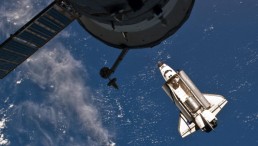
China's Experimental Space Plane Shenlong Drops Unknown Object in Orbit
share this!
March 9, 2021
Breaking the warp barrier for faster-than-light travel
by University of Göttingen
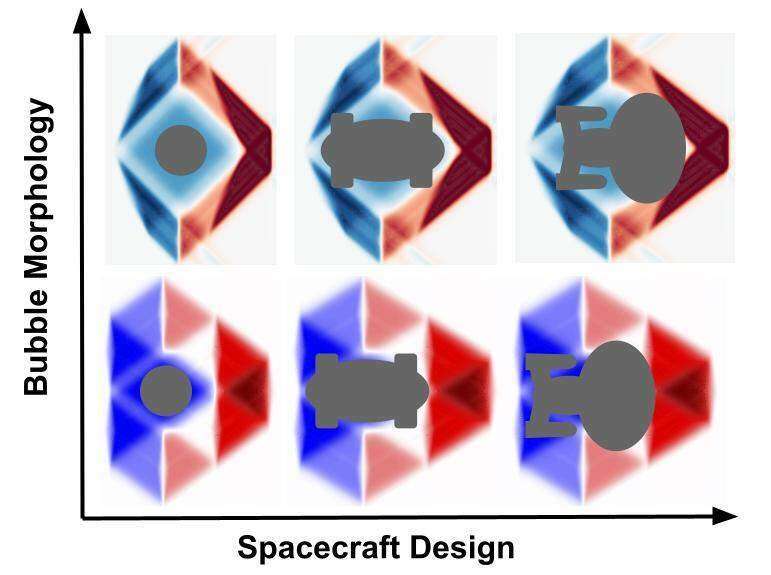
If travel to distant stars within an individual's lifetime is going to be possible, a means of faster-than-light propulsion will have to be found. To date, even recent research about superluminal (faster-than-light) transport based on Einstein's theory of general relativity would require vast amounts of hypothetical particles and states of matter that have 'exotic' physical properties such as negative energy density. This type of matter either cannot currently be found or cannot be manufactured in viable quantities. In contrast, new research carried out at the University of Göttingen gets around this problem by constructing a new class of hyper-fast 'solitons' using sources with only positive energies that can enable travel at any speed. This reignites debate about the possibility of faster-than-light travel based on conventional physics. The research is published in the journal Classical and Quantum Gravity .
The author of the paper, Dr. Erik Lentz, analyzed existing research and discovered gaps in previous 'warp drive' studies. Lentz noticed that there existed yet-to-be explored configurations of space-time curvature organized into 'solitons' that have the potential to solve the puzzle while being physically viable. A soliton—in this context also informally referred to as a 'warp bubble'—is a compact wave that maintains its shape and moves at constant velocity. Lentz derived the Einstein equations for unexplored soliton configurations (where the space-time metric's shift vector components obey a hyperbolic relation), finding that the altered space-time geometries could be formed in a way that worked even with conventional energy sources. In essence, the new method uses the very structure of space and time arranged in a soliton to provide a solution to faster-than-light travel , which—unlike other research—would only need sources with positive energy densities. No exotic negative energy densities needed.
If sufficient energy could be generated, the equations used in this research would allow space travel to Proxima Centauri, our nearest star, and back to Earth in years instead of decades or millennia. That means an individual could travel there and back within their lifetime. In comparison, the current rocket technology would take more than 50,000 years for a one-way journey. In addition, the solitons (warp bubbles) were configured to contain a region with minimal tidal forces such that the passing of time inside the soliton matches the time outside: an ideal environment for a spacecraft. This means there would not be the complications of the so-called 'twin paradox' whereby one twin traveling near the speed of light would age much more slowly than the other twin who stayed on Earth: in fact, according to the recent equations both twins would be the same age when reunited.
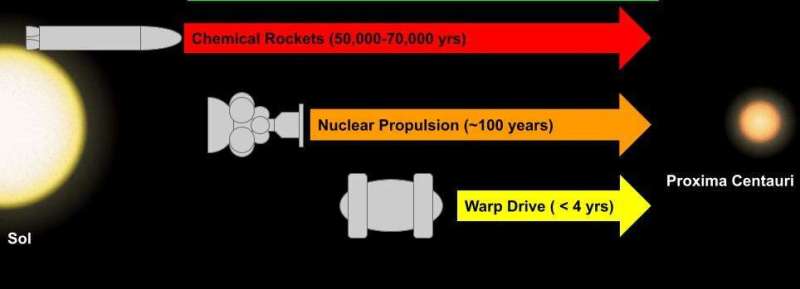
"This work has moved the problem of faster-than-light travel one step away from theoretical research in fundamental physics and closer to engineering. The next step is to figure out how to bring down the astronomical amount of energy needed to within the range of today's technologies, such as a large modern nuclear fission power plant. Then we can talk about building the first prototypes," says Lentz.
Currently, the amount of energy required for this new type of space propulsion drive is still immense. Lentz explains, "The energy required for this drive traveling at light speed encompassing a spacecraft of 100 meters in radius is on the order of hundreds of times of the mass of the planet Jupiter. The energy savings would need to be drastic, of approximately 30 orders of magnitude to be in range of modern nuclear fission reactors." He goes on to say: "Fortunately, several energy-saving mechanisms have been proposed in earlier research that can potentially lower the energy required by nearly 60 orders of magnitude." Lentz is currently in the early-stages of determining if these methods can be modified, or if new mechanisms are needed to bring the energy required down to what is currently possible.
Provided by University of Göttingen
Explore further
Feedback to editors

A novel spray device helps researchers capture fast-moving cell processes
3 hours ago

Tropical forests adjust strategies to thrive even when soils are nutrient poor, large field experiment shows

Boeing's astronaut capsule arrives at the space station after thruster trouble

New material records mechanical stress through luminescence

Computer model demonstrates desire for social proximity improves flight routes among pigeons

Schooling fish expend less energy in turbulent water compared to solitary swimmers, study finds

JWST discovers large variety of carbon-rich gases that serve as ingredients for future planets around very low-mass star

Scientists develop fatigue-free ferroelectric material

Fish out of water: How killifish embryos adapt their development

The first example of cellular origami discovered in protist
Relevant physicsforums posts, single slit diffraction and the hup.
5 hours ago
Can energy be stored in a single particle indefinitely?
Breaking the light speed barrier.
Jun 4, 2024
The photoelectric effect: What frequency does υₛ refer to in the work function?
May 31, 2024
Single slit diffraction
May 30, 2024
Interpreting the energy density of QFT vacuum states
More from Quantum Physics
Related Stories

A potential model for a real physical warp drive
Mar 4, 2021

Don't stop me now! Superluminal travel in Einstein's universe
Nov 27, 2015

There's no way to measure the speed of light in a single direction
Jan 11, 2021

Colliding solitons in optical microresonators to reveal important fundamental physics
Apr 24, 2020

High Altitude Water Cherenkov observatory tests speed of light
Mar 31, 2020
The trouble with rockets
Jan 5, 2018
Recommended for you

Researchers observe quantum critical Bose gas of magnons in quasi-2D antiferromagnet
11 hours ago

Highly sensitive diamond quantum magnetometer can achieve practical ambient condition magnetoencephalography
8 hours ago

Calcium oxide's quantum secret: Nearly noiseless qubits

Study of photons in quantum computing reveals that when photons collide, they create vortices
7 hours ago

Toward testing the quantum behavior of gravity: A photonic quantum simulation
Jun 5, 2024

Researchers draw inspiration from ancient Alexandria to optimize quantum simulations
Let us know if there is a problem with our content.
Use this form if you have come across a typo, inaccuracy or would like to send an edit request for the content on this page. For general inquiries, please use our contact form . For general feedback, use the public comments section below (please adhere to guidelines ).
Please select the most appropriate category to facilitate processing of your request
Thank you for taking time to provide your feedback to the editors.
Your feedback is important to us. However, we do not guarantee individual replies due to the high volume of messages.
E-mail the story
Your email address is used only to let the recipient know who sent the email. Neither your address nor the recipient's address will be used for any other purpose. The information you enter will appear in your e-mail message and is not retained by Phys.org in any form.
Newsletter sign up
Get weekly and/or daily updates delivered to your inbox. You can unsubscribe at any time and we'll never share your details to third parties.
More information Privacy policy
Donate and enjoy an ad-free experience
We keep our content available to everyone. Consider supporting Science X's mission by getting a premium account.
E-mail newsletter
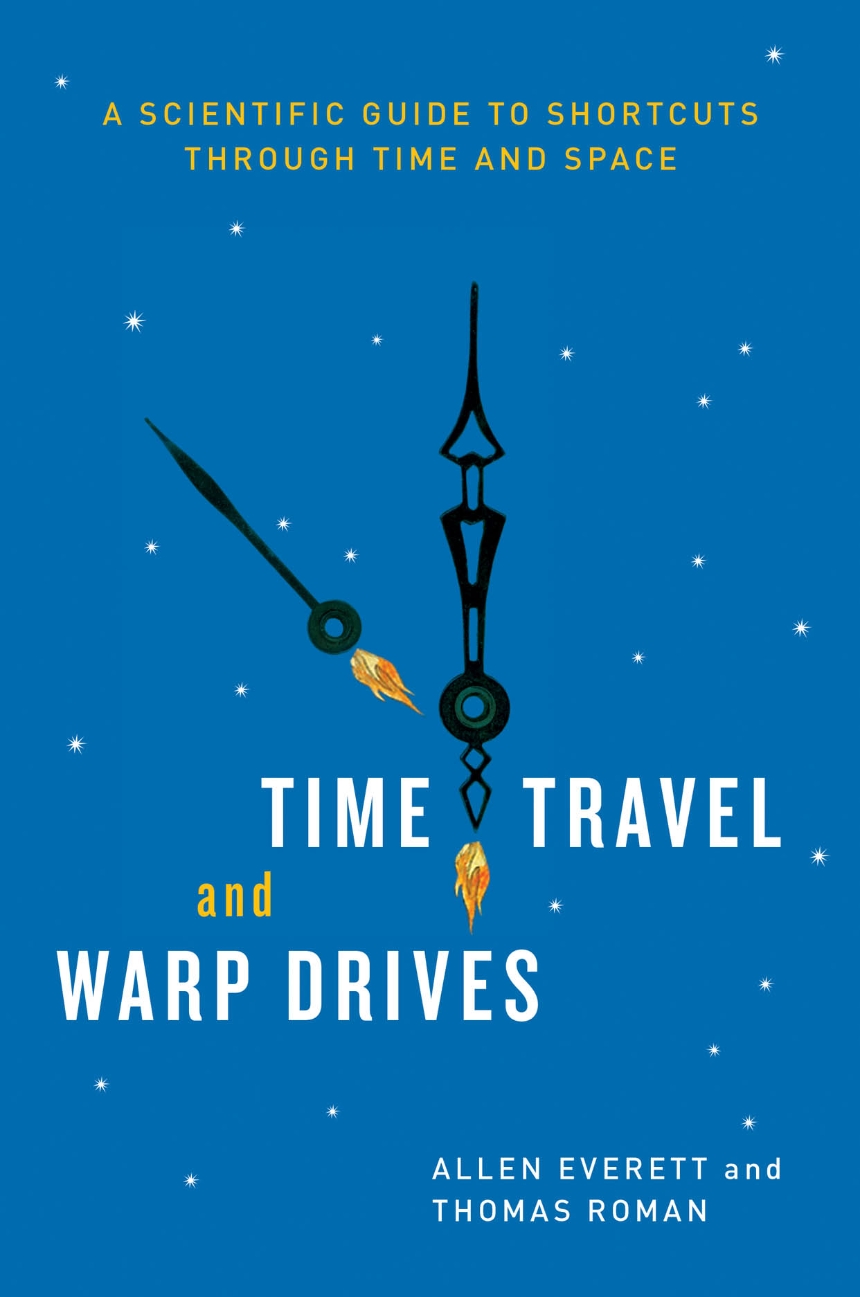
Time Travel and Warp Drives
A scientific guide to shortcuts through time and space.
Allen Everett and Thomas Roman
Sci-fi makes it look so easy. Receive a distress call from Alpha Centauri? No problem: punch the warp drive and you're there in minutes. Facing a catastrophe that can't be averted? Just pop back in the timestream and stop it before it starts. But for those of us not lucky enough to live in a science-fictional universe, are these ideas merely flights of fancy—or could it really be possible to travel through time or take shortcuts between stars? Cutting-edge physics may not be able to answer those questions yet, but it does offer up some tantalizing possibilities. In Time Travel and Warp Drives , Allen Everett and Thomas A. Roman take readers on a clear, concise tour of our current understanding of the nature of time and space—and whether or not we might be able to bend them to our will. Using no math beyond high school algebra, the authors lay out an approachable explanation of Einstein's special relativity, then move through the fundamental differences between traveling forward and backward in time and the surprising theoretical connection between going back in time and traveling faster than the speed of light. They survey a variety of possible time machines and warp drives, including wormholes and warp bubbles, and, in a dizzyingly creative chapter, imagine the paradoxes that could plague a world where time travel was possible—killing your own grandfather is only one of them! Written with a light touch and an irrepressible love of the fun of sci-fi scenarios—but firmly rooted in the most up-to-date science, Time Travel and Warp Drives will be a delightful discovery for any science buff or armchair chrononaut. To see video demonstrations of key concepts from the book, please visit this website: www.press.uchicago.edu/sites/timewarp/.
See video demonstrations of the concepts in the book.
280 pages | 33 halftones, 9 line drawings | 6 x 9 | © 2011
Physical Sciences: Astronomy and Astrophysics , Physics and Astronomy , Physics--Popular Books
- Table of contents
- Author Events
Related Titles
“In recent years, a number of books have taken on real science that sounds like science fiction. Unfortunately, most are frothy concoctions that leave the serious reader unsatisfied. This is all the more reason to celebrate the arrival of Time Travel and Warp Drives— a deeply informed, richly detailed yet immensely readable account of science at the frontiers, by two physicists who know the territory. For well over a decade Allen Everett and Thomas Roman have been charting the strange realms of negative energy, twisted spacetime, temporal paradoxes, and travel between universes. In a wonderfully written and especially timely account, they share with us what they’ve learned. Time Travel and Warp Drives deserves a place on the shelf between Greene’s The Elegant Universe and Hawking’s A Brief History of Time. ”
David Toomey, author of The New Time Travelers: A Journey to the Frontiers of Physics
“There have been plenty of light popularizations of the puzzling physics of time. This book stands out in its depth and range. Written by two who have done the calculations, followed the field, and thought about what it all means, it leads the reader through the byzantine labyrinths of current theory. I found it enlightening and fun to read. If you have time for one book in this field, let it be this one.”
Gregory Benford, author of Timescape
"I have been searching for years for a book like this. With Time Travel and Warp Drives , Everett and Roman have written an illuminating exploration of the physics of time travel. What sets this book apart, however, is that the authors do not rely on analogies or metaphors. They actually explain the underlying science in a clear and accessible way. My search is over: this book is my new guide to a place stranger than science fiction--our universe."
Charles Yu, author of How to Live Safely in a Science Fictional Universe
“Einstein meets Captain Kirk in this improbable foray into the frontiers of theoretical physics, where readers survey the exciting possibilities for traveling through time and between galaxies. . . . Relying only minimally on technical jargon and formulas, the authors open to view the exciting conceptual prospects for designing a time machine capable of slipping backward through the centuries and of riding fast-than-light warp bubbles through the cosmos. . . . Armchair scientists share the thrill of peeking into the universe’s deepest secrets. Penetrating science illuminates humankind’s most audacious dreams."
Booklist | starred review
"Everett and Roman are physicists who have probed the theoretical possibilities of time travel. Their expertise shines."
Science News
"Whenever anyone asks me whether time travel is possible, or rapid insterstellar travel via spacewarps is possible, I send them to this book. It is the best source of answers at a level accessible to nonexperts."
Kip Thorne, author of Black Holes and Time Warps: Einstein's Outrageous Legacy | Feynman Professor of Physics, California Institute of Technology
Table of Contents
From data to quanta.
Slobodan Perovic
A Relatively Painless Guide to Special Relativity
Dave Goldberg
Quantum Legacies
David Kaiser
Beyond Weird
Philip Ball
Be the first to know
Get the latest updates on new releases, special offers, and media highlights when you subscribe to our email lists!
Sign up here for updates about the Press

The Mirror Universe
Q: What is the Mirror Universe and how do I get there? A: This is a brand new alternative Universe where the Terran Empire reigns supreme. You will be able to warp into MU space by spending Mirror Vouchers to travel through Interphasic Rifts. There will be around 50 new systems in MU space and traveling deeper into the Universe will require Rift Keys. You cannot travel freely in and out of this new Universe. Q: Where do I go to find an Interphasic Entry Rift to get into the MU? A: Locations for the Warp will include Mirror Alpha Centauri, Mirror Wolf, and Mirror Sirius.
Q: Do I need to use one voucher per ship that enters the MU? A: The entry cost is 300 vouchers per ship that enters the MU. You can take more than one ship, but the costs will add up.
Q: What is the voucher duration? A: They will have 20 minutes of base duration at launch. When time runs out, your Ships active in the MU will be auto-extracted, keeping everything gained while in the MU.
Q: How long can I stay in the MU and how do I leave? A: You can remain there until you are destroyed or the voucher expires. While in Mirror space you cannot recall your ships, to escape you’ll need to find an Extract Rift and use it to warp to safety. Extract Rifts never have a cost to use!
Q: Can my Alliance travel with me and cooperate while we’re there? A: If you each spend vouchers individually, yes you can play together. You won’t be able to use either disco jumping or gorn wormholes to enter the MU.
Q: Can I travel to the MU with any Ship, at any level? Any restrictions? A: This area of space is available for players of Ops level 40+ with Ships having a minimum warp range of 50.
Q: What can I find in Mirror Universe space only? A: Trellium is a substance exclusive to this universe. There will be mines of raw Trellium scattered around the systems and you will also be able to collect Trellium by destroying hostiles. There are not any uses for it raw, but when you refine it you get Liquid Trellium.
Q: What is Trellium and how many types of it are available? A: There will be two types of raw Trellium, A and D. From refining them you will get Liquid Trellium. Liquid Trellium-D is essential to upgrade Officers from the Mirror Universe (like Picard and Data at launch) as well as using it in the Store.
Q: When can I get the Refinery for the Mirror Universe? How does it work? A: You unlock it at Ops level 40. To transform raw Trellium you will need a Refinery. The MU refinery also offers Mirror Universe Free Entry Vouchers, for example, among many other valuable items and materials. However, one of the most important items that you can get from it is Mirror Dust: this is the new currency for the brand new and powerful Mirror Research Tree.
Q: How many new Researches are available and which ones are the best to survive in the MU? A: There will be around 70 (!) new Research nodes. The Mirror Research tree comes with unparalleled power and survivability bonuses. It’s an integral part of your Mirror Universe exploits. This is the only research tree in the game to offer Apex Barrier and will significantly improve your chances at survival in both PVP and PVE battles.
Q: Does the Mirror Tree research work only for MU? A: MU research is sourced from the MU but its effects apply everywhere in the game.
Q: Is the Apex Barrier useful in the Mirror Universe? Why should I get it? A: The Apex Barrier is a brand new modifier, essential for raising your chances of survivability. The Barrier provides true damage mitigation from all damage sources after all other bonuses. For example, every 10,000 points of an active Apex Barrier will reduce damage taken equivalent to +100% effective health (meaning that the damage you can take goes up by 100%).
Q: Is the Mirror Universe dangerous? What type of hostiles can I find there? A: It’s not a friendly place - remember: there is no protected cargo in the MU. If your ships are destroyed, everything will be gone. Do your best to exit it safely. Inside the MU you will fight the new Terran hostiles. Their Abilities are the following: Dismantlement : At the start of the round, if the enemy player is hull breached, this ship increases its standard damage by a percentage for 1 round.
Deadlock : At combat start, Hull breach to the enemy player for the duration of combat.
Photophobia : At the start of the round, if the enemy player is hull breached, this ship increases its Isolytic damage by a percentage for 1 round.
Q: Can other players hit you inside the Warp Zone or MU systems? Can players hit you in the Extract Zone? A: Players can hit you everywhere in the MU.
Q: What kind of Officers and Ships should I bring with me, to increase my chance of survival? A: You can challenge the MU any way you want, but whatever you do, make sure that your Apex Barrier is active. It will be very difficult to explore every corner of the Mirror Universe without it.

Related articles
MORE SECTIONS
- Social Casino
MORE FROM THE SUN
- Newsletters

Giant Japanese ‘space elevator’ promises to lift tourists 22,000 miles above Earth by 2050 – but there’s a big danger
- Debbie White , U.S. News Reporter
- Published : 14:17 ET, Jun 6 2024
- Updated : 16:18 ET, Jun 6 2024
- Published : Invalid Date,
SPACE tourists could be lifted 22,000 miles above Earth - at the touch of an elevator button.
The bonkers $100 billion giant space elevator project could start hoisting people to Mars by 2050, says its Japanese designers.

"Instead of taking six to eight months to reach Mars, scientists have estimated a space elevator could get us there in three to four months or even as quickly as 40 days," reported Business Insider .
The idea has been described as "kooky," technically challenging, and risky given that its tether would have to be under enough tension to be unaffected by extreme weather events, warned a scientist.
Obayashi Corporation, the firm behind iconic buildings such as the 2,080-foot high Tokyo Skytree tower, has proposed building the "technically feasible" space elevator.
It would "bridge the gap between Earth and space via a cable, allowing people to travel to and from space as easily as if they were riding a train," the firm said.
READ MORE ON WEIRD SCIENCE

'Radioactive' skeletons 'suggest nuke blasted ancient city', mad theory claims

Planet ‘home to Star Trek’s Spock’ is 'illusion' as scientists warn over mystery
"The concept has been deemed feasible from a construction standpoint, and it is now in the process of actually being developed."
Obayashi Corporation’s project team announced its space elevator construction concept 14 years ago.
However, in an update on the project, Business Insider said yesterday the firm confirmed it was pushing ahead with its plans.
FLOATING PORT
Obayashi is currently "engaged in research and development, rough design, partnership building, and promotion," said its tech expert, Yoji Ishikawa.
Most read in Tech

You can sign up for ‘Netflix of AI’ app that'll make any TV show you want

Apple and Google locked in AI 'arms race' as insider teases big iPhone advantage

Watch incredible moment SpaceX Starship rocket blasts off in 4th test launch

Airbus unveils ghostly unmanned stealth drone called ‘Wingman’ for spy missions
"We need partnerships, we need different industries; of course, raising funds is very essential," he added.
The idea is to tether the elevator to an Earth port - the elevator’s point of arrival and departure, said Obayashi in 2014.
This structure would "float on the sea at the equator, while a terminal will be placed in a geostationary orbit about 36,000 km [22,000 miles] above Earth," the firm has proposed.
The Earth port would be accessed by an undersea tunnel.

"The journey into space begins at the Earth Port. The port will function as a facility for anchoring the cable of the space elevator to the Earth and adjusting the tension of the cable," said Obayashi.
"At the same time, it will also be used as a base for transporting people and cargo during the construction of the Geostationary Orbit Station (the terminal in geostationary orbit).
"The port will eventually serve as a point of arrival and departure to transport us into space and back.
"With this, traveling from Earth to space will become a reality for ordinary people."
ZERO GRAVITY
Obayashi said that a colossal space solar power system could be installed near a geostationary orbit station (satellite) to transmit large volumes of electrical energy back to Earth.
"Moreover, since the inside of the [22,000-mile high] station will have a weightless environment, visitors will be able to enjoy moving in zero gravity," the firm said.
"A counterweight will balance the weight at the tip of a 96,000-km [59,000-mile] cable extending beyond the geostationary orbit [to ensure the station hovers above the same point on our planet 24/7.]
"At the same time, it will serve as the Solar System exploration gate, sending spacecraft out to extract resources from planets and other parts of the solar system, such as Jupiter and asteroids.
"As a step toward the actualization of this concept, Obayashi is currently carrying out experimentation in space to test the long cable which will connect Earth and beyond."

The firm said in 2014 that the space elevator is planned to be built by the year 2050.
"It is composed of a 96,000-km [59,000-mile] carbon nanotube [tube made out of carbon] cable, a 400-meter diameter floating Earth port, and a 12,500-ton counter-weight," it added.
"Other facilities include Martian/lunar gravity centers, a low Earth orbit gate, a geostationary Earth orbit station, a Mars gate and a Solar System exploration gate."
It estimated that it would take about two decades to construct the super-strong 20-ton cable, one end of which would be fixed to the Earth's surface.
Space distances

Obayashi wants to build a space elevator by the year 2050
The Japanese firm has designed a space elevator.
The US$100-billion project would feature a sea-based departure port where space tourists would be lifted to a geostationary Earth orbit station at a height of 36,000 km (22,369 miles)
A 96,000 km (60,000 m) cable would extend beyond the geostationary orbit.
This final destination would serve as the Solar System exploration gate, sending spacecraft out to extract resources from planets and other parts of the solar system, such as Jupiter and asteroids.
By comparison, the distance from Earth to the Moon is 384,400 km (238,855 m); Earth to Mercury is 77 million km (48m miles); from Earth to Mars is 225m km (140m miles); and Earth to Venus is 259.58m km (25m miles).
Earth's average distance to the Sun is about 150m km (93m miles).
The International Space Station maintains an orbit approximately 400 km (250 m) above sea level, while the Hubble Space Telescope operates at an altitude of about 515 km (320 m), said Nasa.
This cable would have to be "reinforced 510 times by climbers up to 7,000 tons."
"The current technology levels are not yet sufficient to realize the concept, but our plan is realistic, and is a stepping stone toward the construction of the space elevator," it said.
"It's been sort of a kooky idea," Christian Johnson told Business Insider.
He published a report on space elevators last year in the peer-reviewed Journal of Science Policy & Governance, that pointed out that it could provide a cheaper alternative to rockets.
"The space elevator is a hypothetical concept for placing satellites in orbit around Earth that would result in dramatic cost savings over traditional rocket launches," he said in his findings.
"[It] would work by placing a counterweight in space that is tethered to the Earth's surface and held in place by the centrifugal force of the Earth's rotation.
"Technical challenges, particularly those related to the tether material, have prevented a space elevator from getting past the design stage."
TETHER COULD SNAP
He also described how it would function.
"A passenger wishing to go into space, instead of riding in a rocket, can simply enter a 'climber' - a vehicle that attaches to the tether and climbs up it - to ride up to the altitude desired," he said.
Johnson, an associate information scientist with the research-based RAND Corporation, pointed out the technical challenges, including the impact of severe weather .
"Large storms can carry debris at high speed, which risk cutting - if not snapping - the tether," he warned.
"Lightning poses another risk: a direct lightning strike on the tether could very possibly destroy it."
The idea of a space elevator is nothing new.
It was proposed by Russian space pioneer Konstantin Tsiolkovsky in 1895.
Read More on The US Sun

Wendy Williams' pal thinks she's been 'forced to silence' after vanishing

Eminem's ex makes profit selling $560k home she bought with loan from star
And in 2019, a team of researchers revealed a concept called Spaceline, a type of space elevator to link Earth and the Moon.
The scientists at Columbia University and Cambridge University published their concept in the preprint server ArXiv.
- Space and astronomy
- Weird Science
- United States

IMAGES
VIDEO
COMMENTS
The closest star to Earth is Proxima Centauri. It is about 4.25 light-years away, or about 25 trillion miles (40 trillion km). The fastest ever spacecraft, the now- in-space Parker Solar Probe ...
The fastest ever spacecraft, the now-in-space Parker Solar Probe will reach a top speed of 450,000 miles (724,000 km) per hour. It would take just 20 seconds to go from Los Angeles to New York ...
This sci-fi mode of practical interstellar travel, which television audiences first saw in 1966, inspired Mexican physicist Miguel Alcubierre Moya to investigate the feasibility of a real method ...
A new study provides some theoretical underpinning to warp drives, suggesting that the superfast propulsion tech may not forever elude humanity. Sci-fi fans — especially " Star Trek " devotees ...
New research suggests that it might be possible to build warp drives and beat the galactic speed limit. Faster than light travel is the only way humans could ever get to other stars in a ...
The goal of a warp drive is to get from A to B in the time between commercial breaks, which typically involves faster-than-light motion. But special relativity expressly forbids speeds faster than ...
Physicists Just Figured Out How Wormholes Could Enable Time Travel. Physics 16 July 2023. By Mike McRae. (gremlin/Getty Images) Theoretical physicists have a lot in common with lawyers. Both spend a lot of time looking for loopholes and inconsistencies in the rules that might be exploited somehow. Valeri P. Frolov and Andrei Zelnikov from the ...
A warp drive would manipulate space-time itself to move a starship, taking advantage of a loophole in the laws of physics that prevent anything from moving faster than light. A concept for a real ...
We Warp Drive manufacturing, our fission-annihilation antigravity propulsion accelerate to lightspeed, but by nuclear annihilation reaction generate high-density time-space, so from outside observation, we traveling on higher speed. The best is to travel outside of the galactic disk for maximum speed.
The Alcubierre drive ( [alkuˈβjere]) is a speculative warp drive idea according to which a spacecraft could achieve apparent faster-than-light travel by contracting space in front of it and expanding space behind it, under the assumption that a configurable energy-density field lower than that of vacuum (that is, negative mass) could be created.
NASA artist's 1998 rendition of warp drive travel. The ring around the spacecraft generates a negative-energy field. From today's perspective, the negative-energy field would no longer be ...
Here's How. Scientists Believe Light Speed Travel Is Possible. Here's How. A functioning warp drive would allow humans to reach the far ends of the cosmos in the blink of an eye. n late 2020 ...
The closest star to Earth is Proxima Centauri. It is about 4.25 light-years away, or about 25 trillion miles (40 trillion km). The fastest ever spacecraft, the now-in-space Parker Solar Probe will reach a top speed of 450,000 mph (201 km/s). It would take just 20 seconds to go from Los Angeles to New York City at that speed, but it would take the solar probe about 6,633 years to reach Earth ...
In thinking about the example of the cylindrical ride, we see that accelerated motion can warp space and time. It is here that Einstein connected the dots to suggest that gravity is the warping of space and time. Gravity is the curvature of the universe, caused by massive bodies, which determines the path that objects travel.
Is NASA really working on . . . a warp drive?An internal feasibility report suggests the agency might be, or at least that the idea of traveling through folded space is part of the NASA ...
History and characteristics. Warp drive, or a drive enabling space warp, is one of several ways of travelling through space found in science fiction. It has been often discussed as being conceptually similar to hyperspace.: 238-239 A warp drive is a device that distorts the shape of the space-time continuum.: 142 A spacecraft equipped with a warp drive may travel at speeds greater than that ...
Warp speed would enable you to travel faster than the speed of light. Learn about warp speed and whether it's a scientific possibility or just a sci-fi dream. ... (up-down, left-right, and forward-backward) and time are all part of what's called the space-time continuum. It's important to understand Einstein's work on the space-time continuum ...
Physicists Discover New Way to Visualize Warped Space and Time. April 10, 2011. PASADENA, Calif.—. When black holes slam into each other, the surrounding space and time surge and undulate like a heaving sea during a storm. This warping of space and time is so complicated that physicists haven't been able to understand the details of what goes ...
Scientists have claimed to develop a physical model for light-speed warp travel that would allow spacecraft to cover far distances while bending the Space-Time continuum.
5 sci-fi space travel methods and the real theories behind them ... Massive objects like stars or black holes bend time and space like a bowling ball on a trampoline. ... Warp six is common ...
Lentz explains, "The energy required for this drive traveling at light speed encompassing a spacecraft of 100 meters in radius is on the order of hundreds of times of the mass of the planet ...
In Time Travel and Warp Drives, Allen Everett and Thomas A. Roman take readers on a clear, concise tour of our current understanding of the nature of time and space—and whether or not we might be able to bend them to our will. Using no math beyond high school algebra, the authors lay out an approachable explanation of Einstein's special ...
New Warp Drive Concept Does Twist Space, Doesn't Move Us Very Fast. (arstechnica.com) 69. An anonymous reader quotes a report from Ars Technica: A team of physicists has discovered that it's possible to build a real, actual, physical warp drive and not break any known rules of physics. One caveat: the vessel doing the warping can't exceed the ...
When human ships warp travel they have a Gellar Field, which takes a little bubble of realspace with them, so that the ship doesn't technically enter the warp properly. Eldar souls shine far brighter to daemons than human ones, so a ship with an Eldar aboard entering the warp is more likely to draw daemons attention, but as long as the Gellar ...
A: This is a brand new alternative Universe where the Terran Empire reigns supreme. You will be able to warp into MU space by spending Mirror Vouchers to travel through Interphasic Rifts. There will be around 50 new systems in MU space and traveling deeper into the Universe will require Rift Keys. You cannot travel freely in and out of this new ...
The space elevator would bridge the gap between Earth and space via a hefty cable, said its designer, Japan-based Obayashi Corporation Credit: Obayashi "Instead of taking six to eight months to reach Mars, scientists have estimated a space elevator could get us there in three to four months or even as quickly as 40 days," reported Business Insider. ...
Published 10:30 PM EDT, Wed June 5, 2024. Link Copied! Leave a comment. CNN —. On the cover of Lisa Birnbach's "The Official Preppy Handbook," a tongue-in-cheek 1980s guide to looking ...